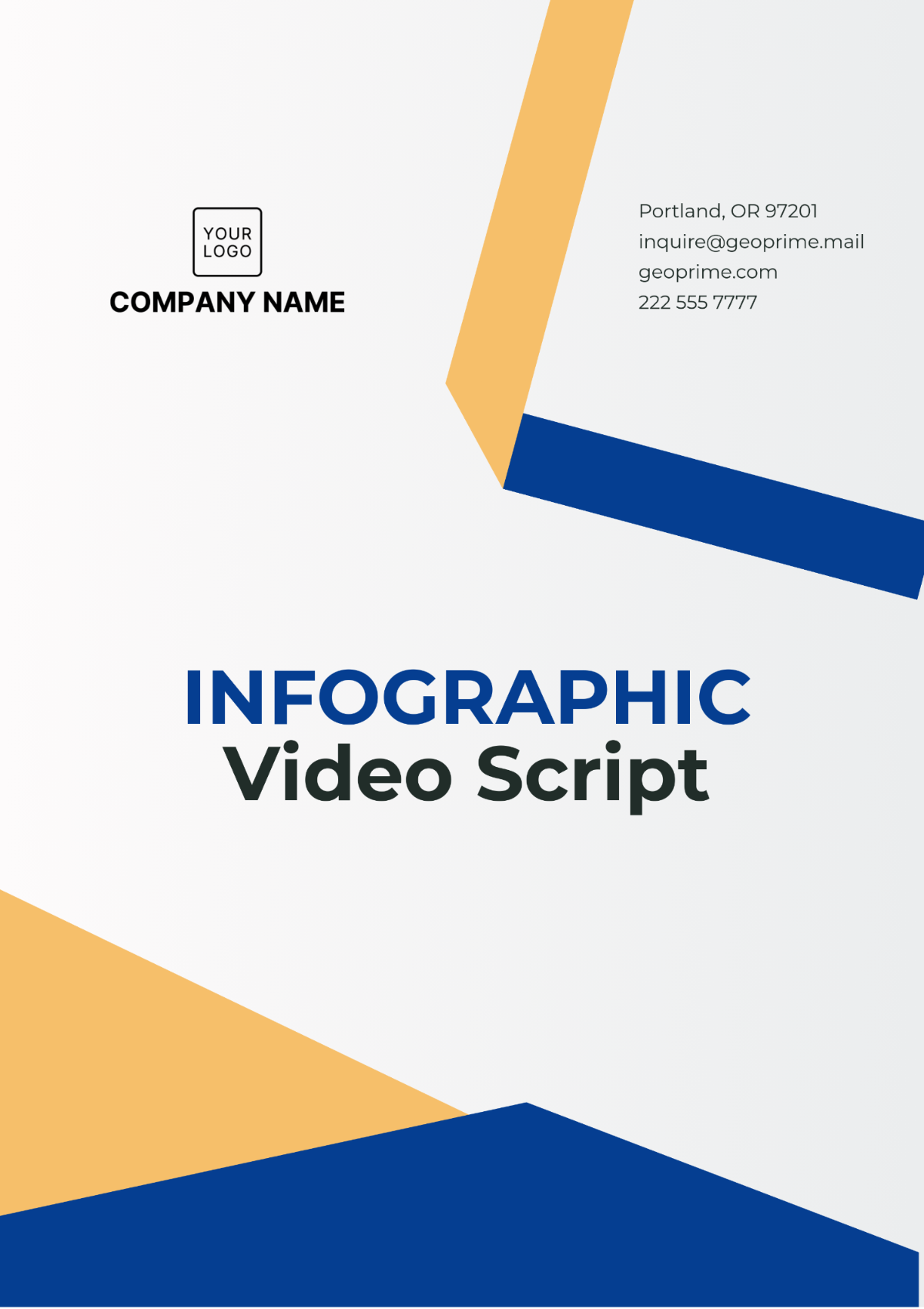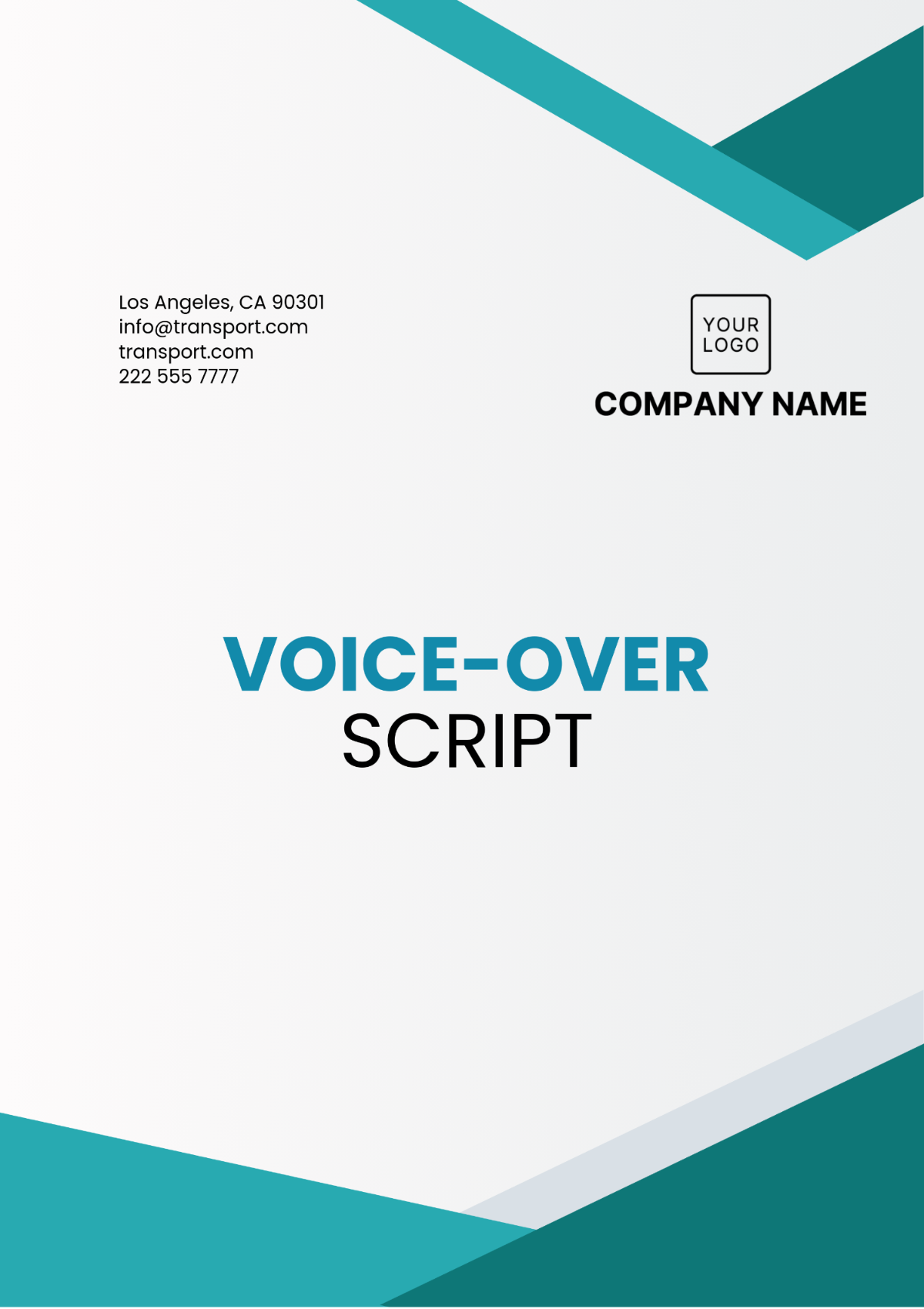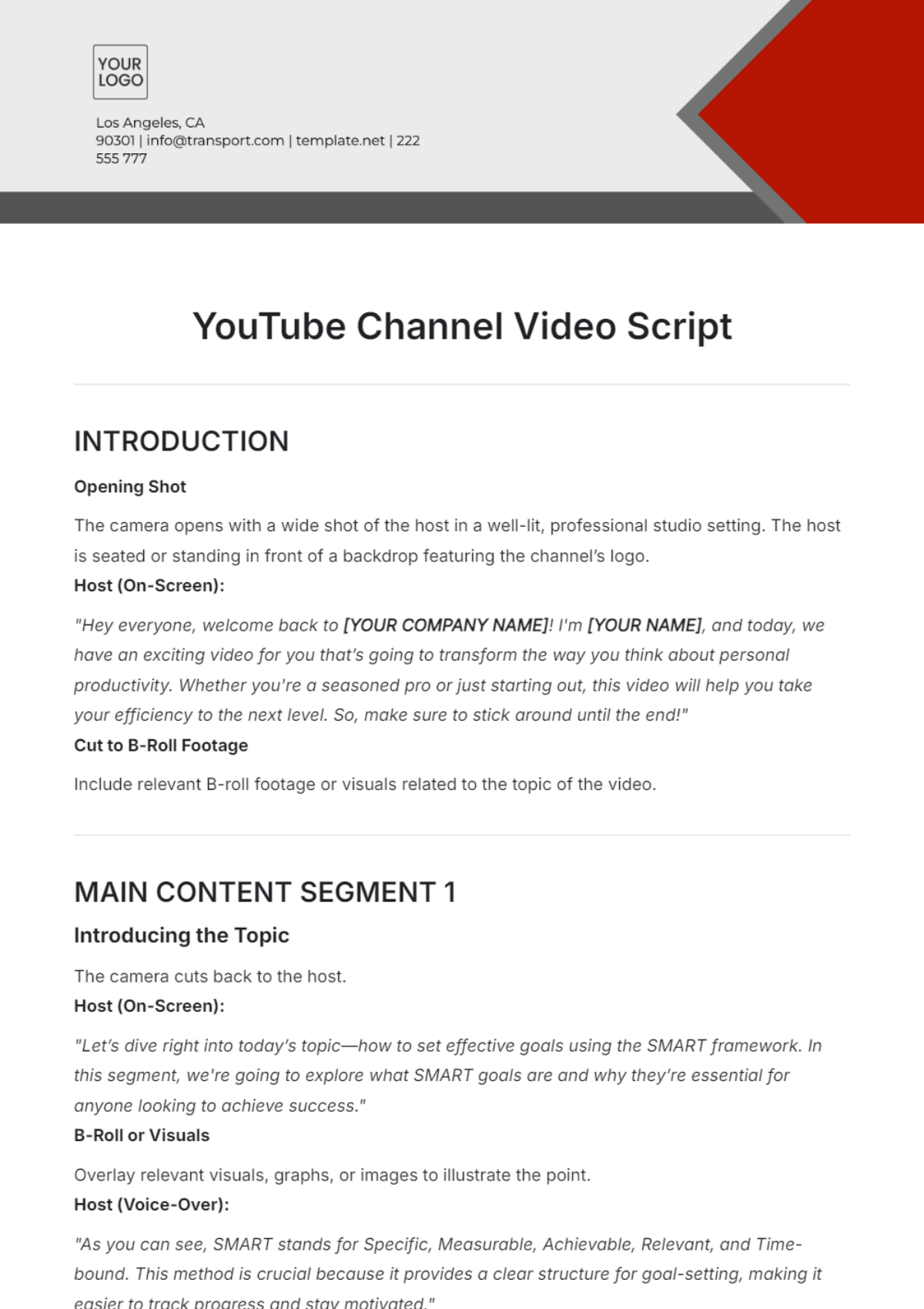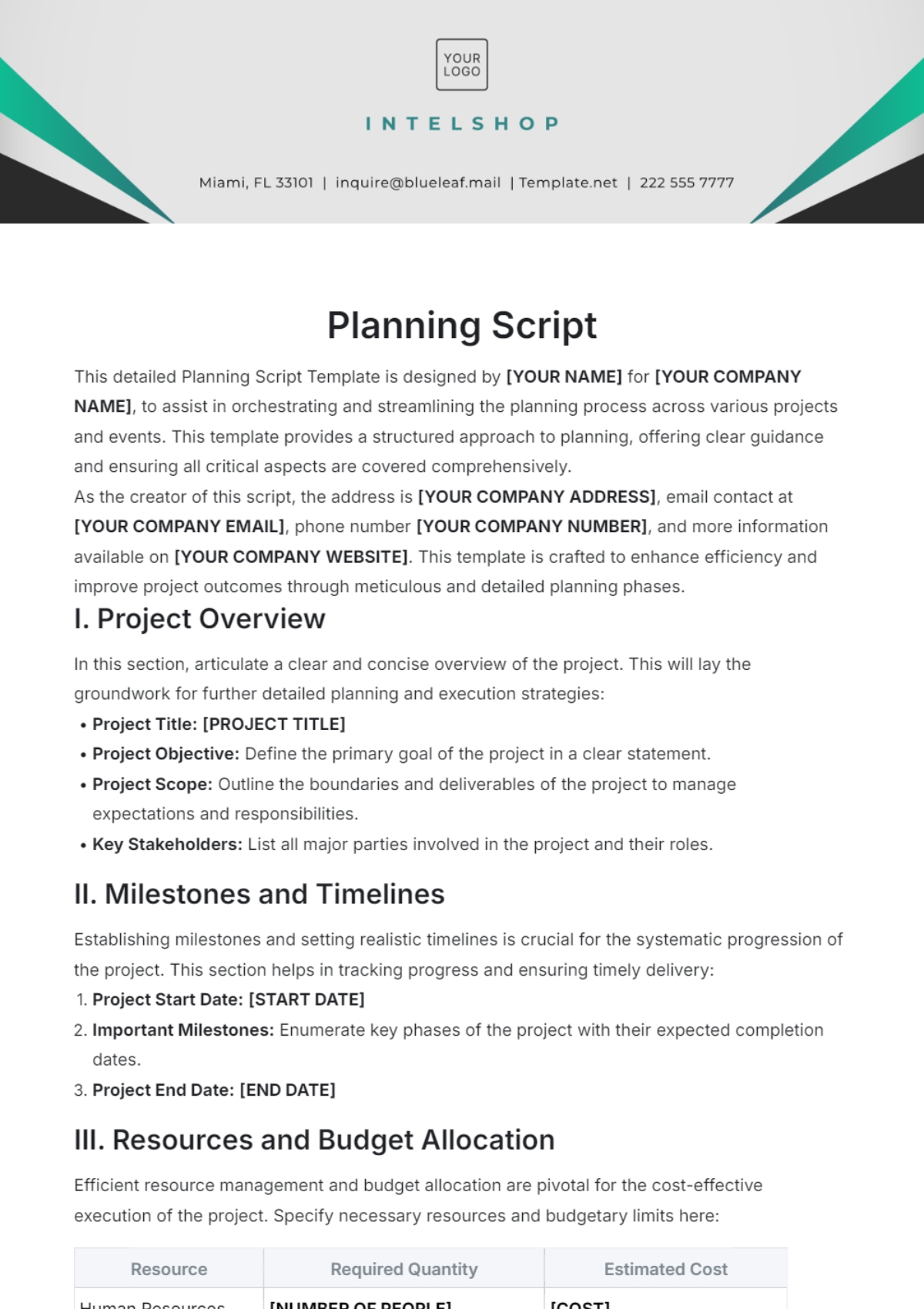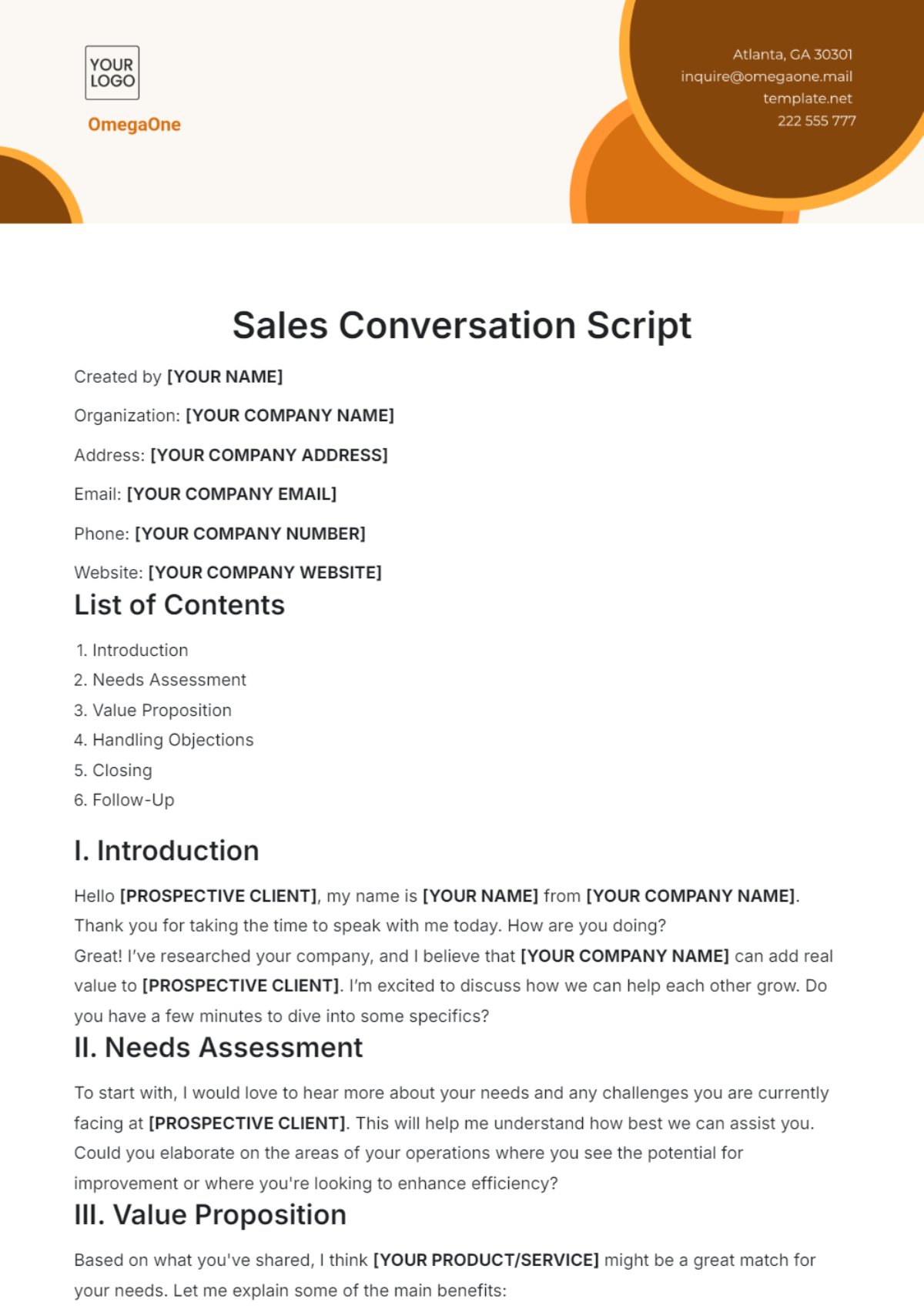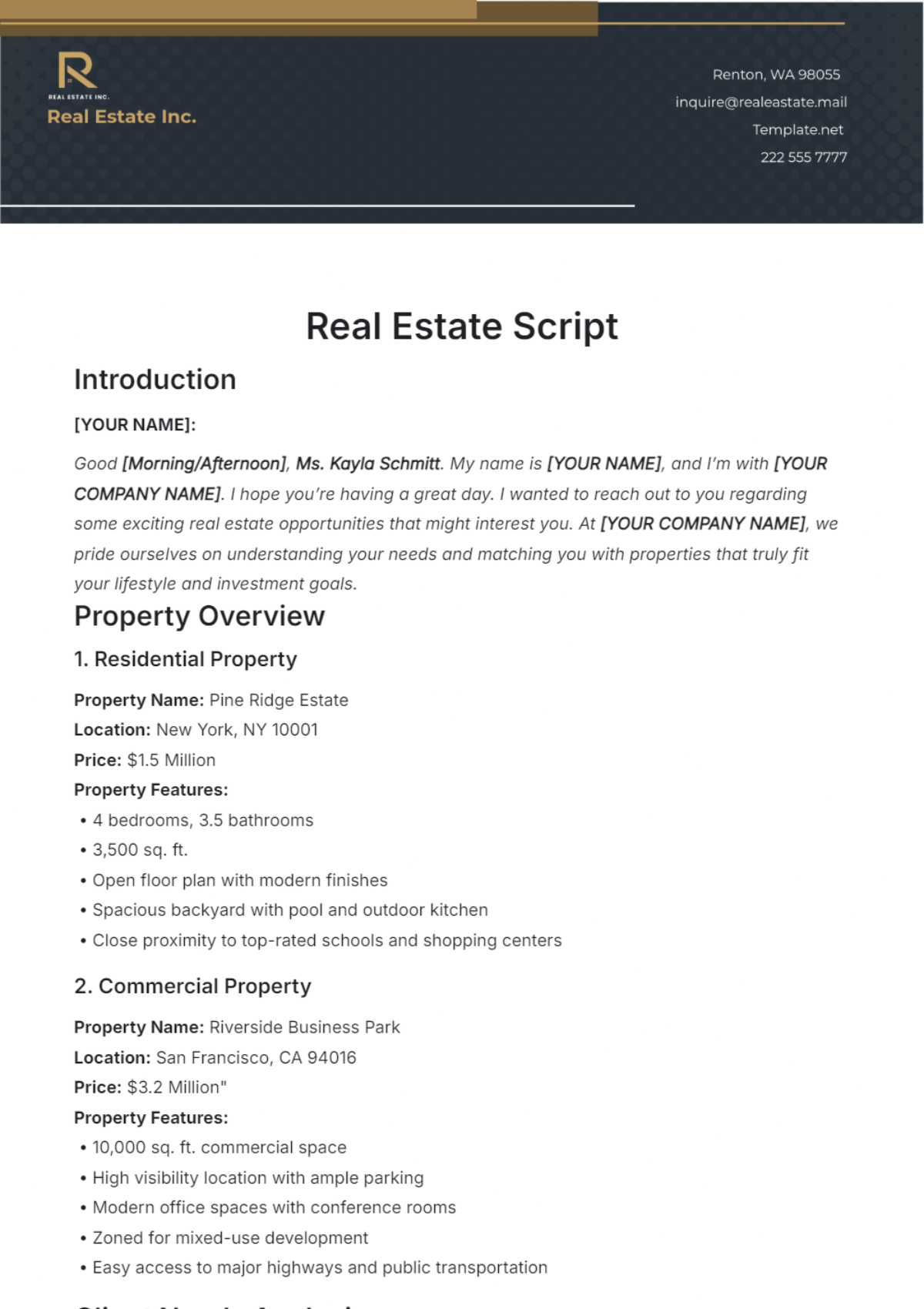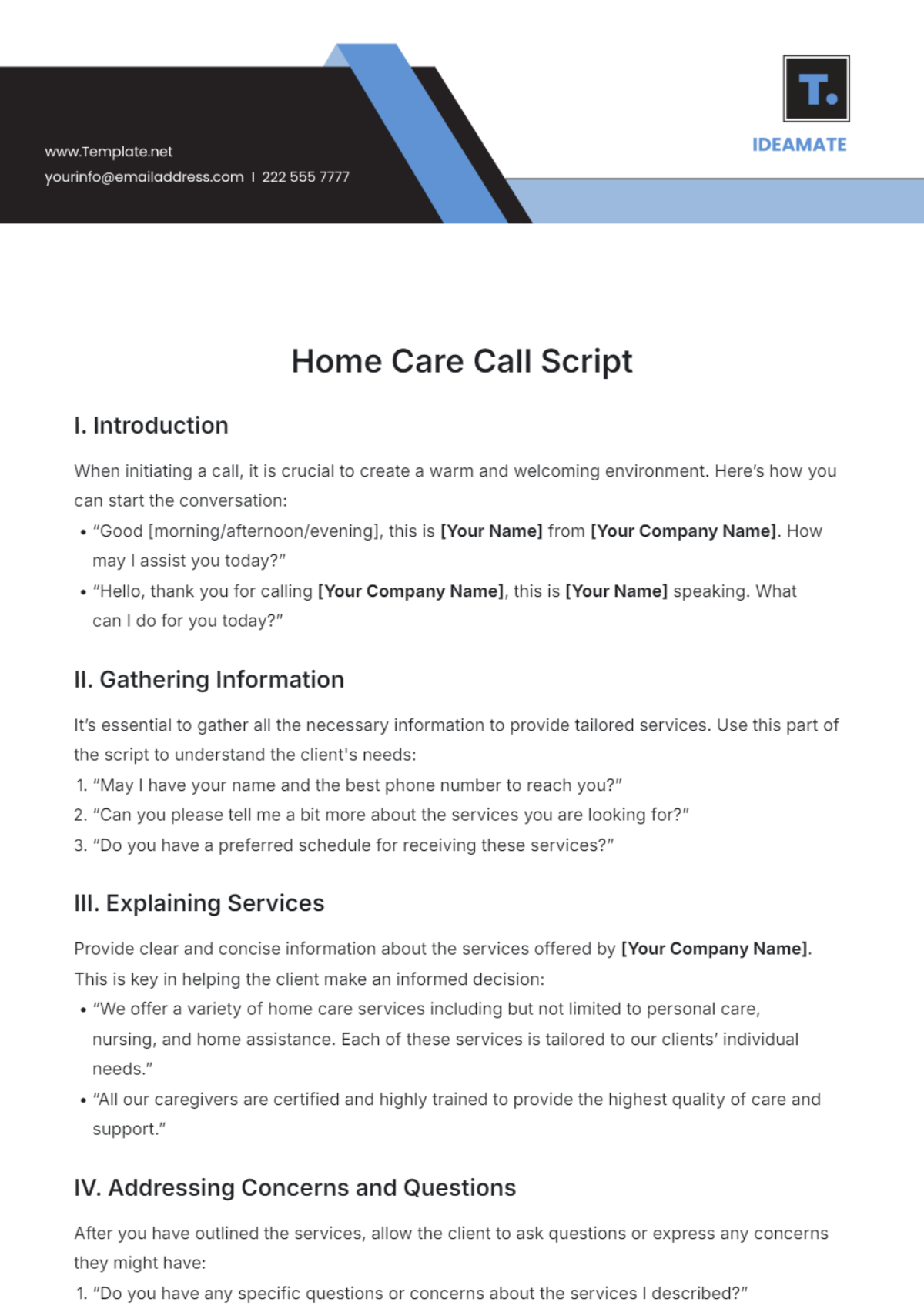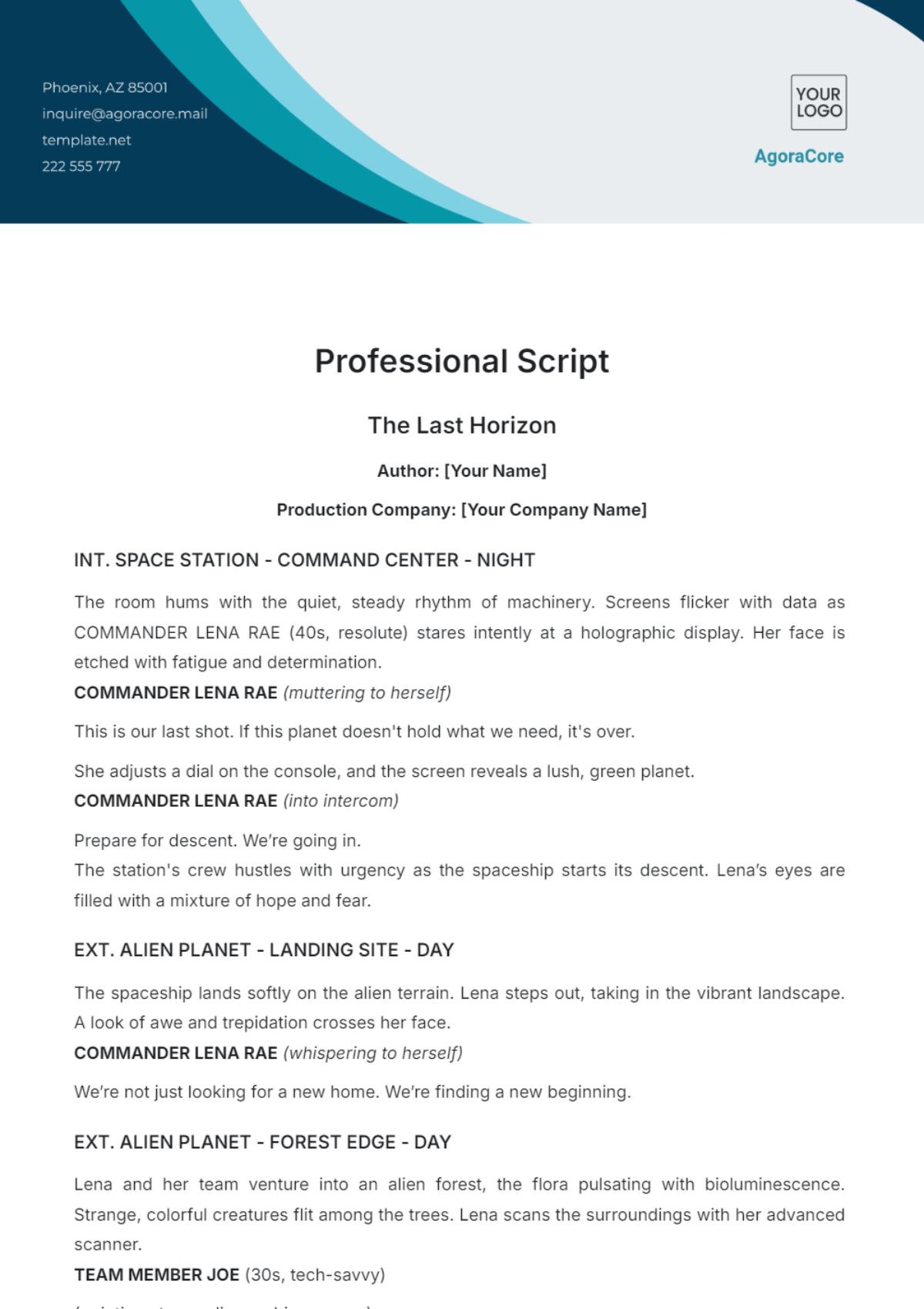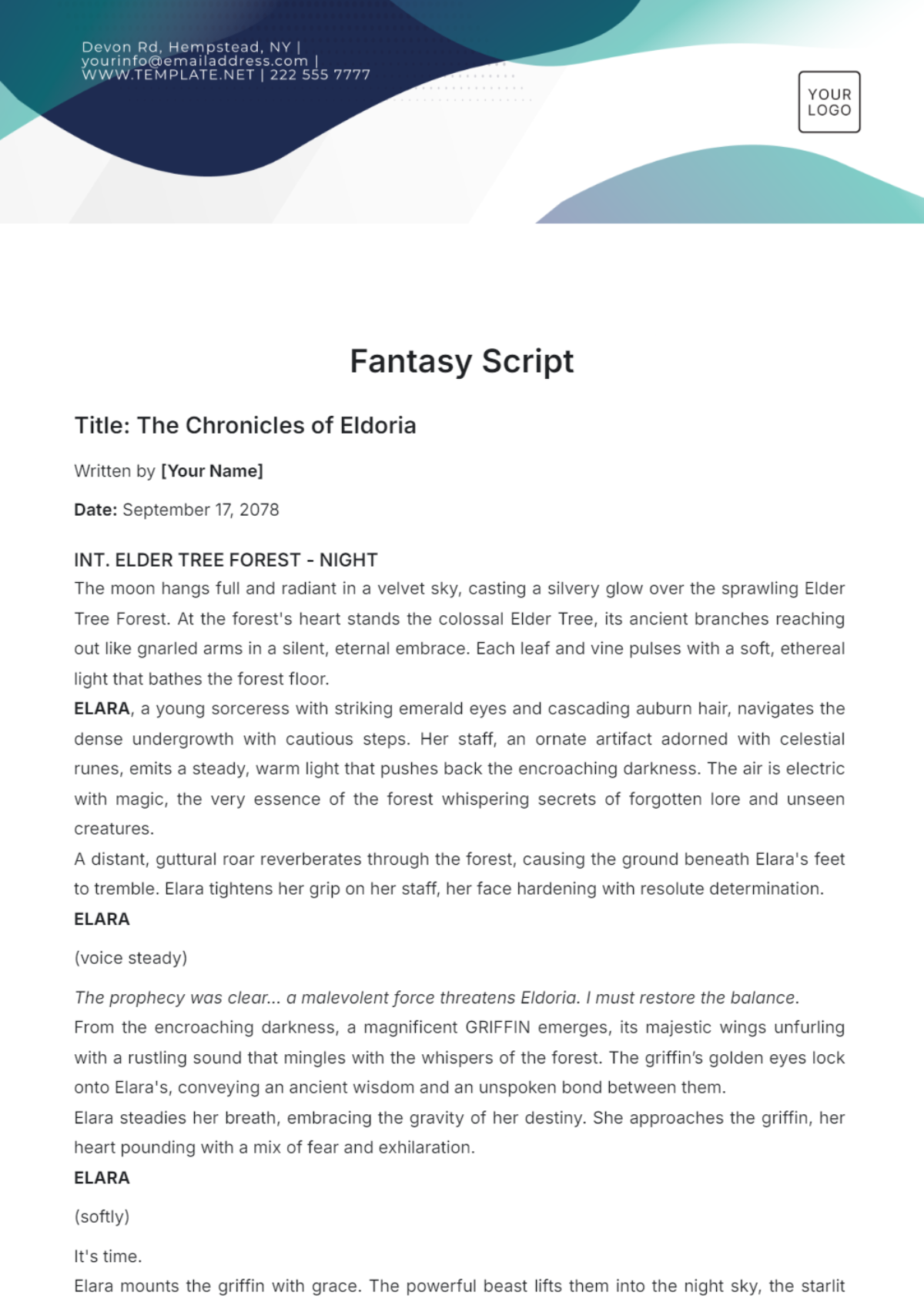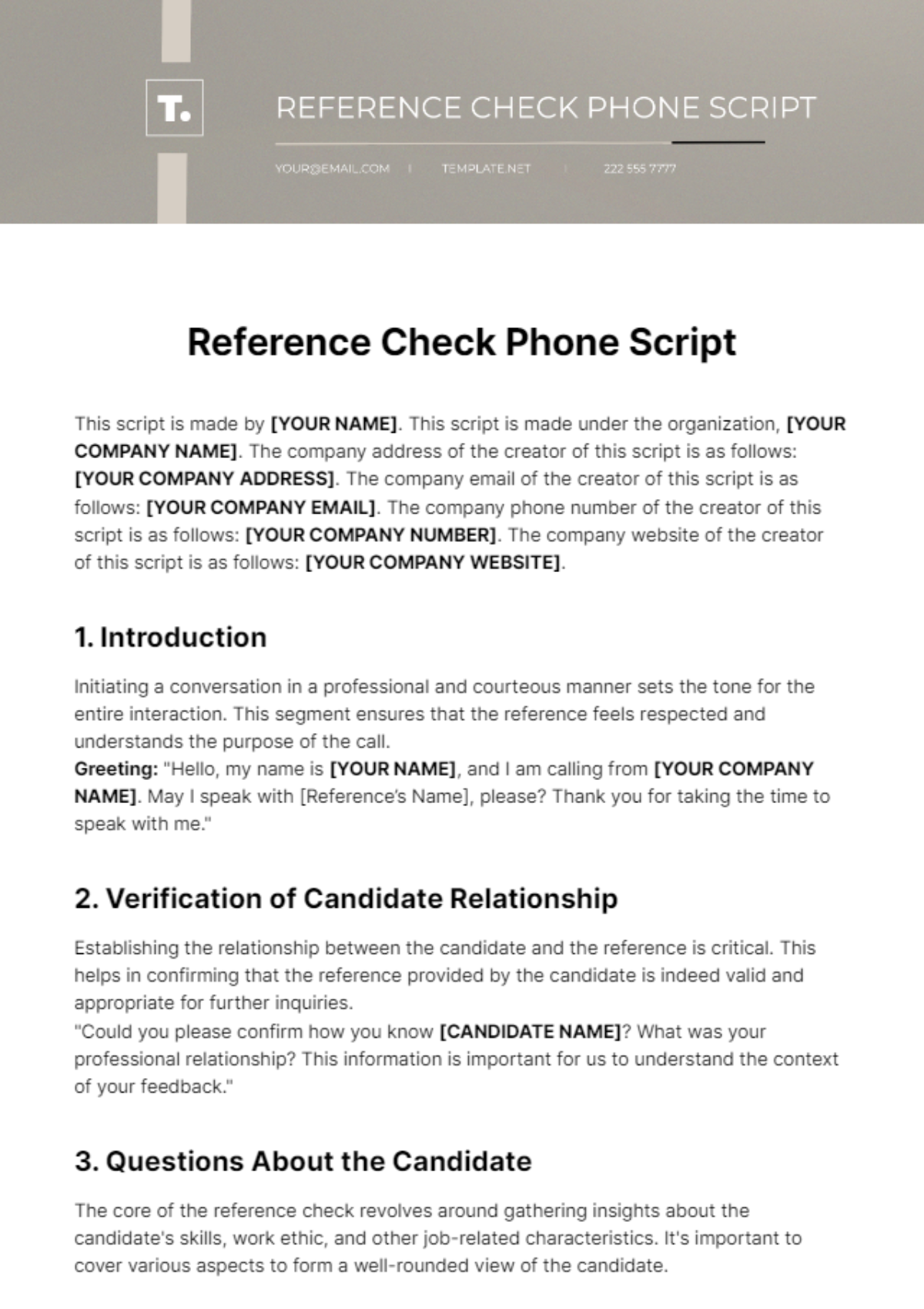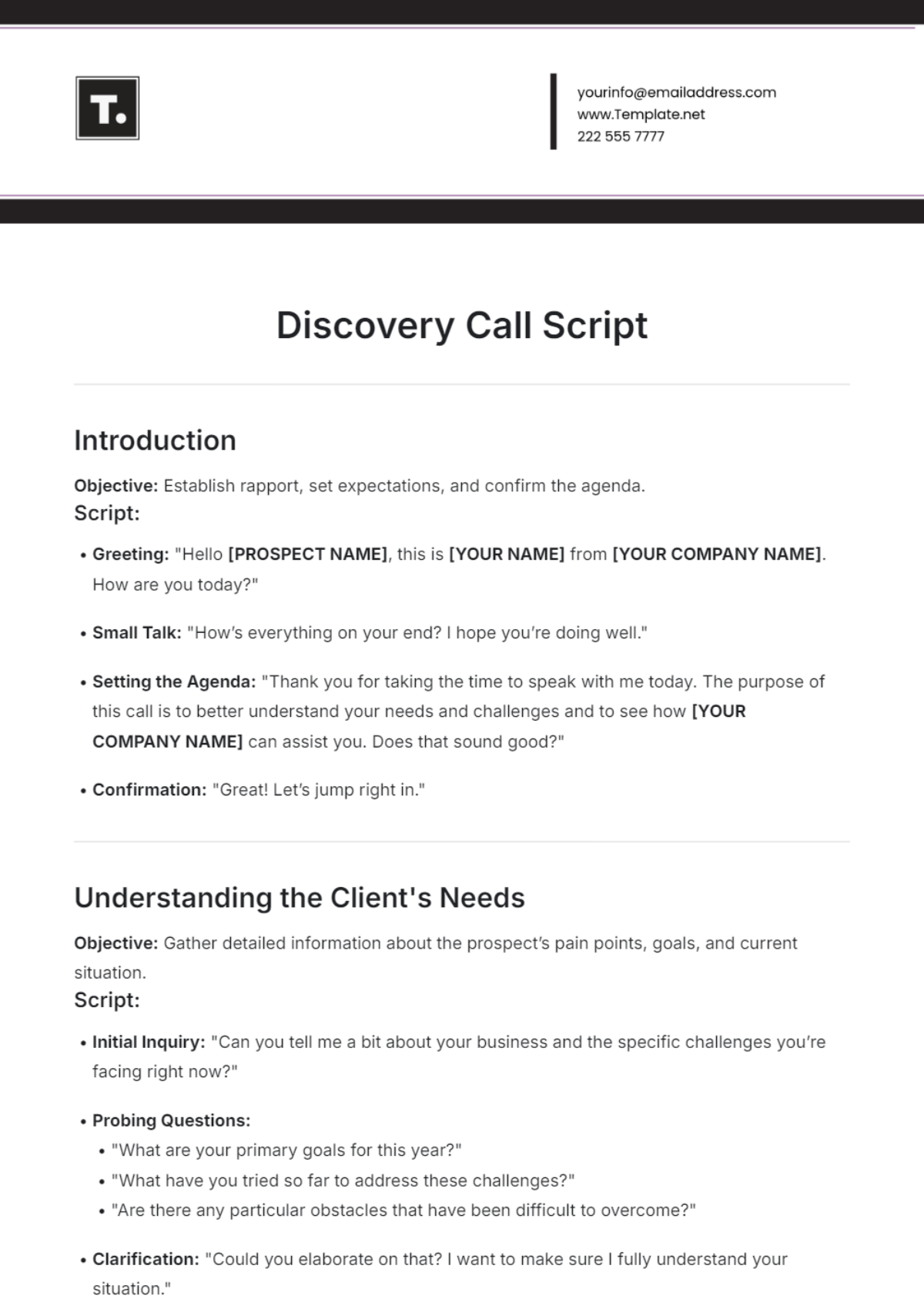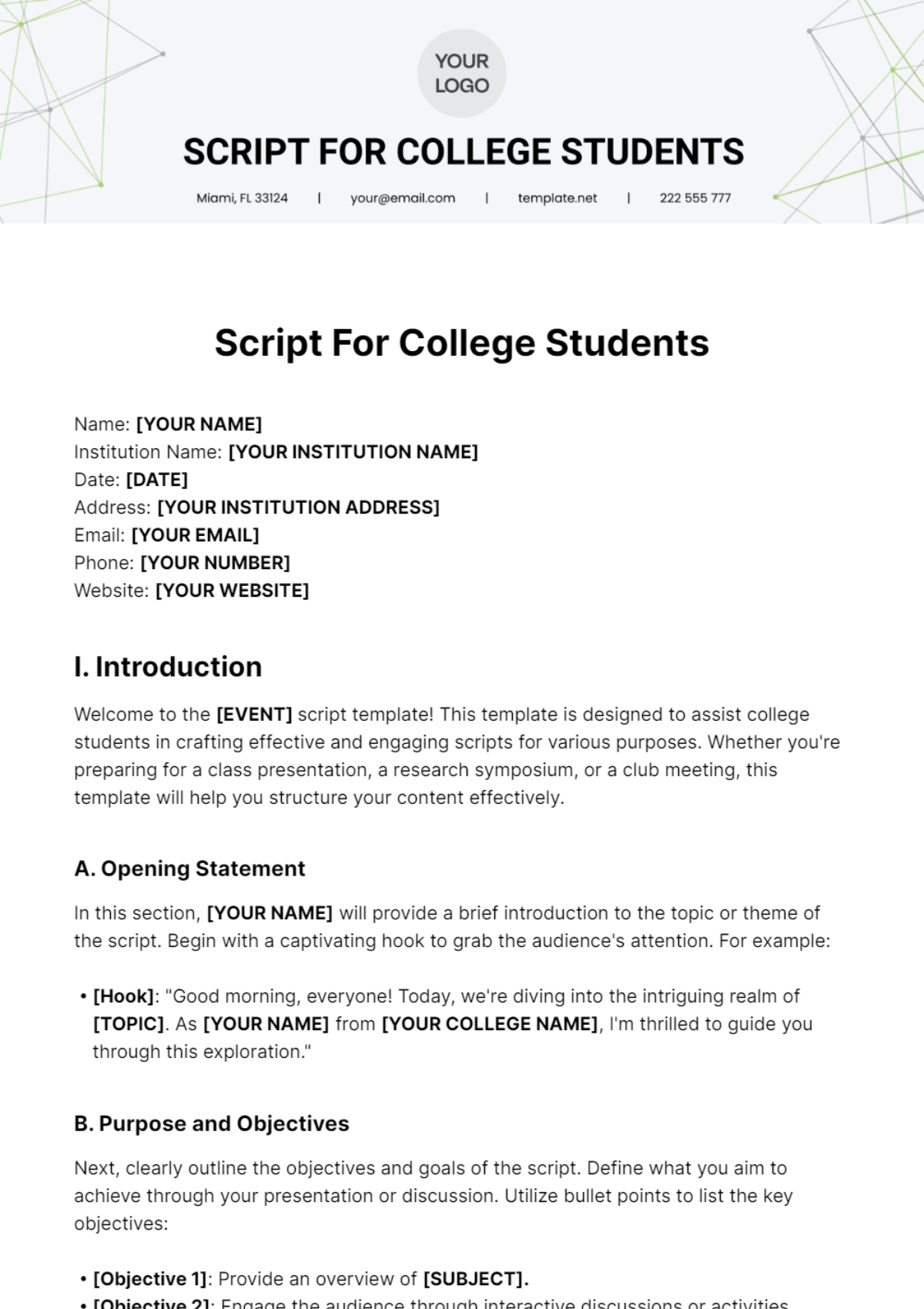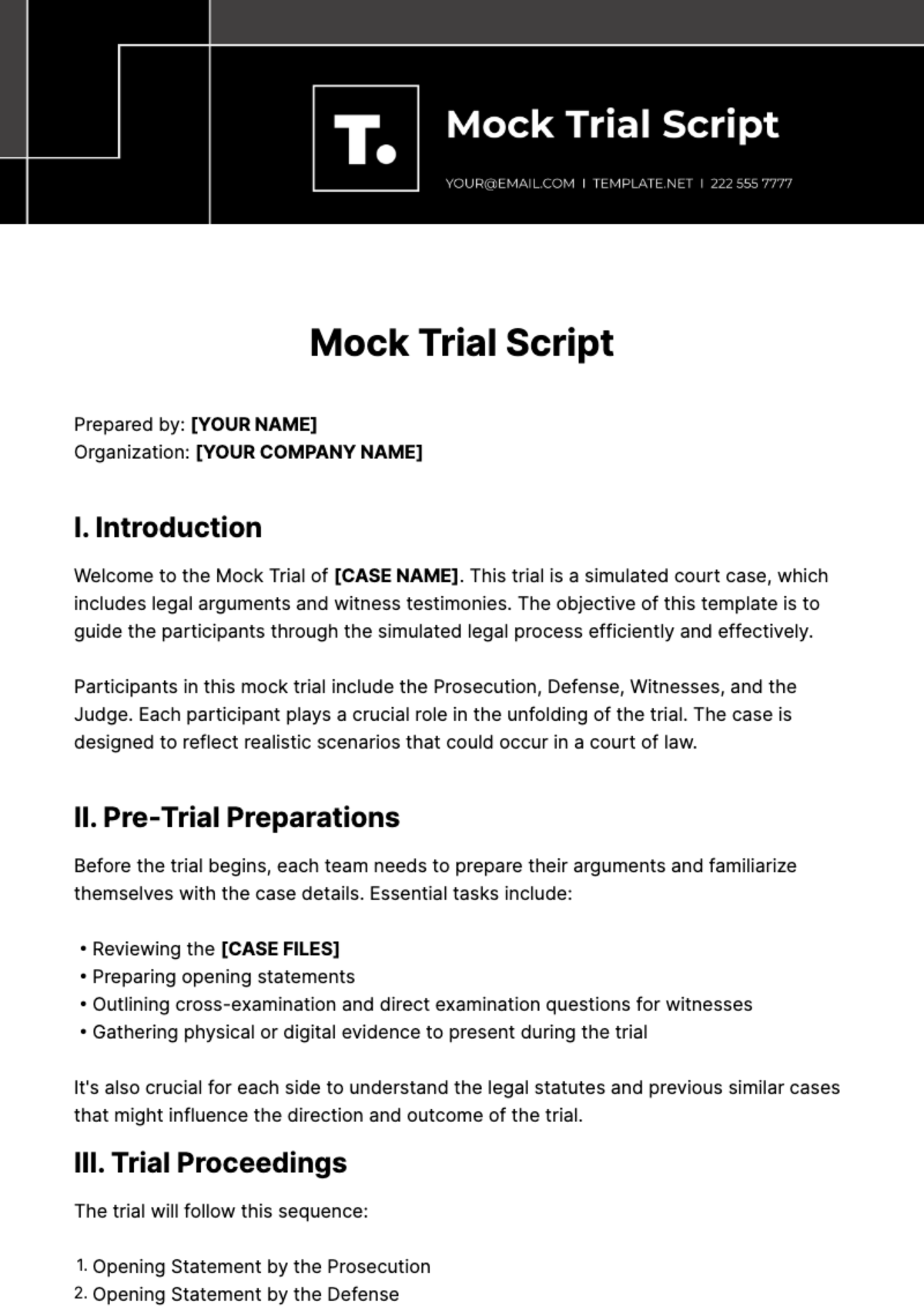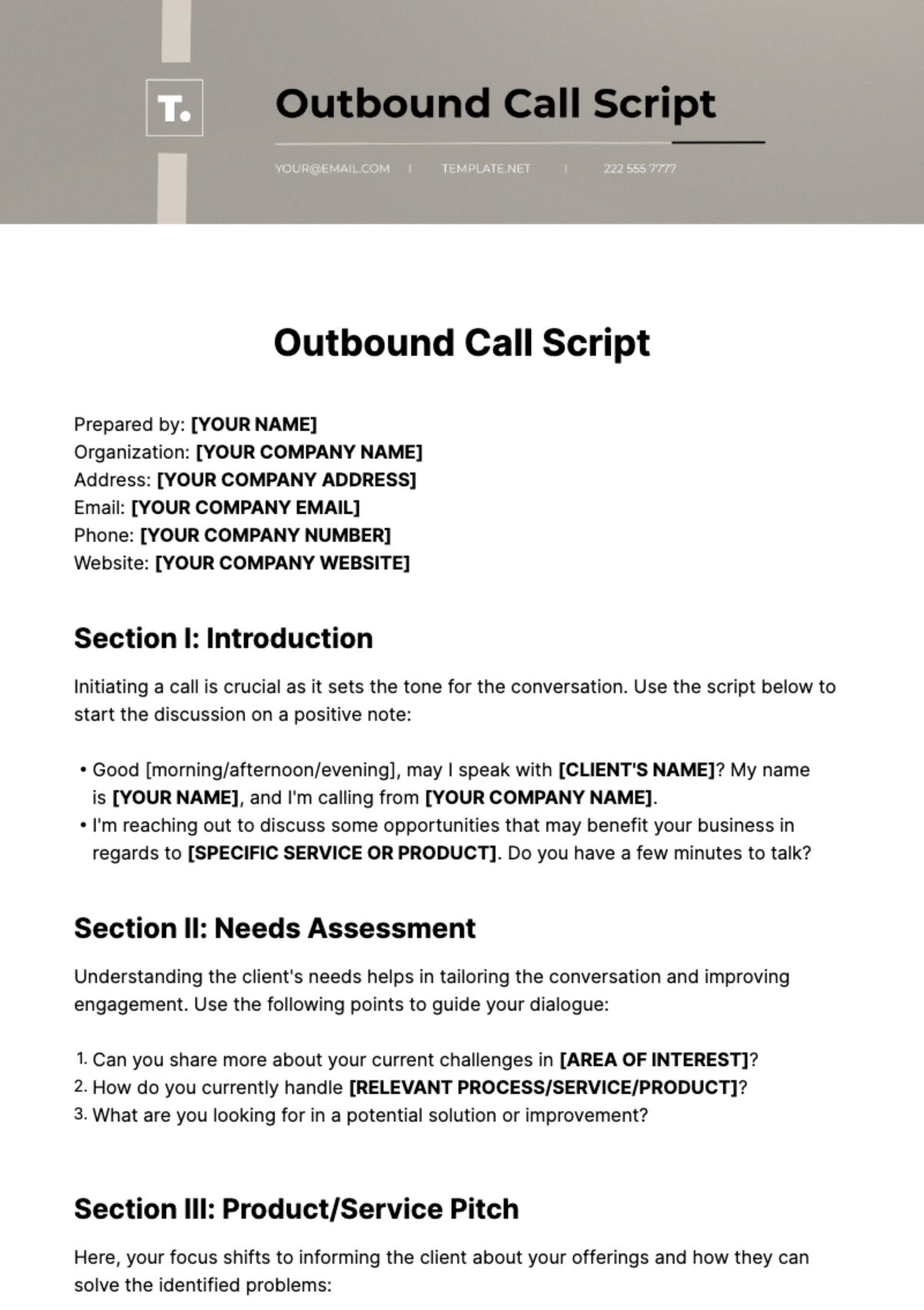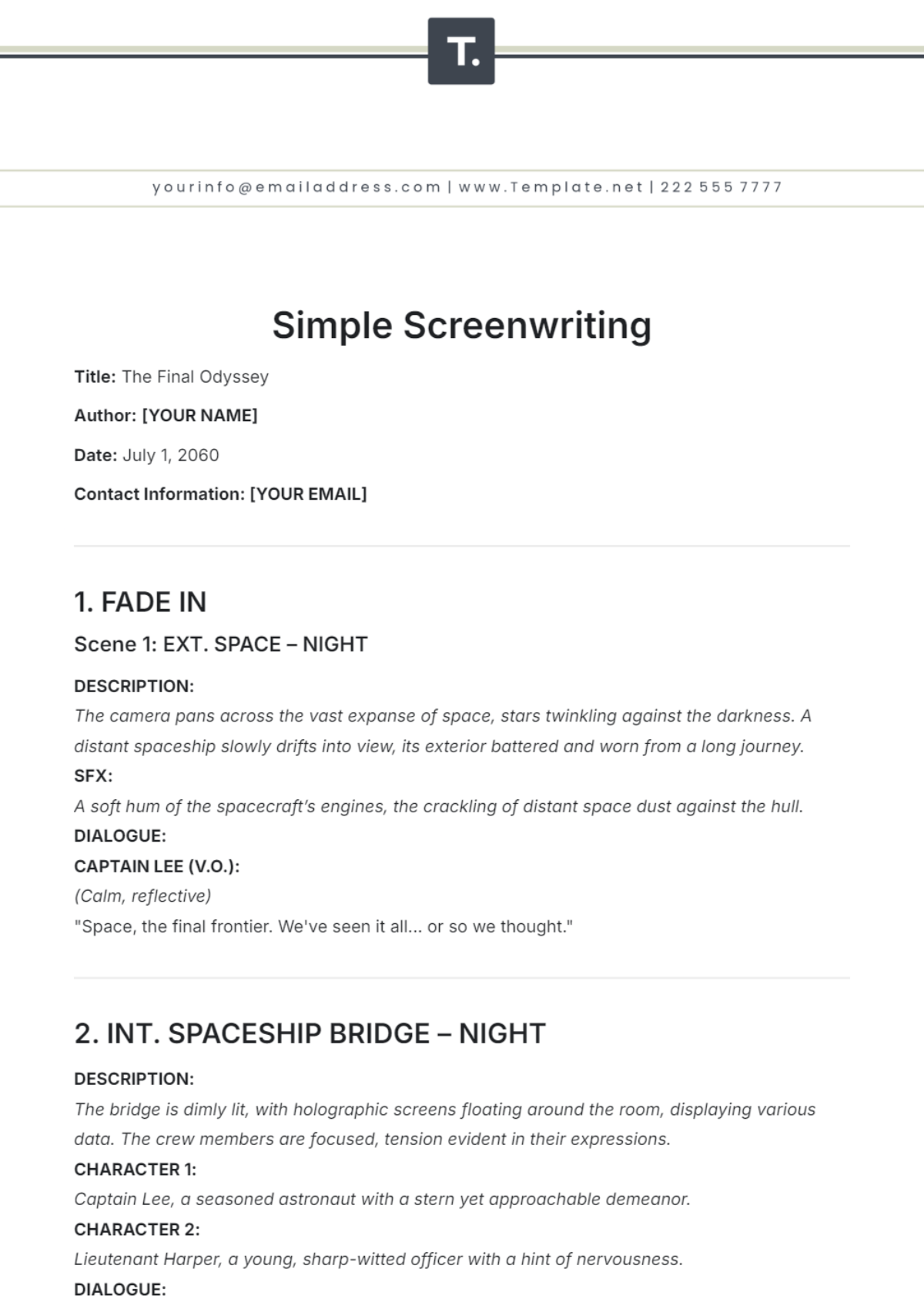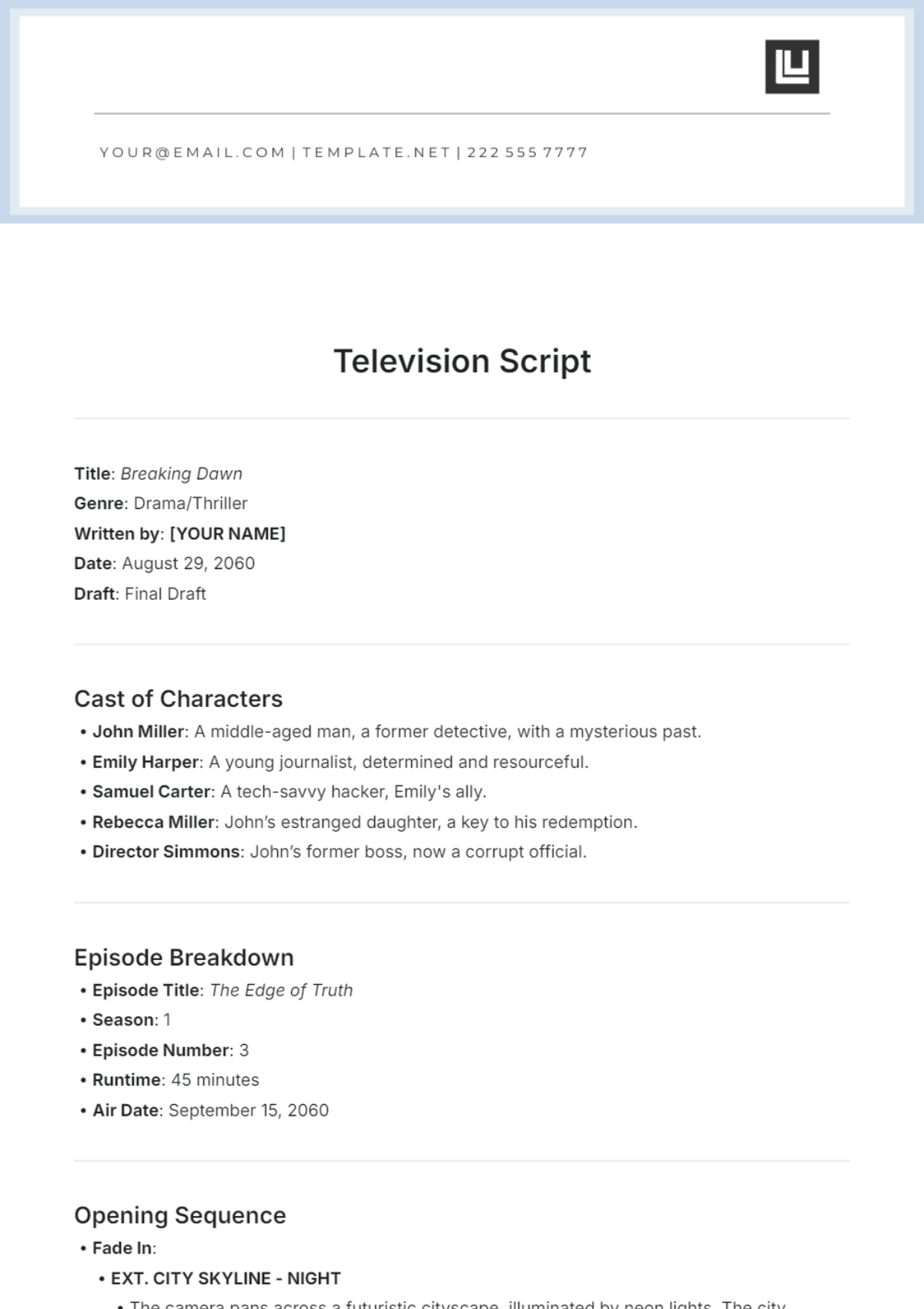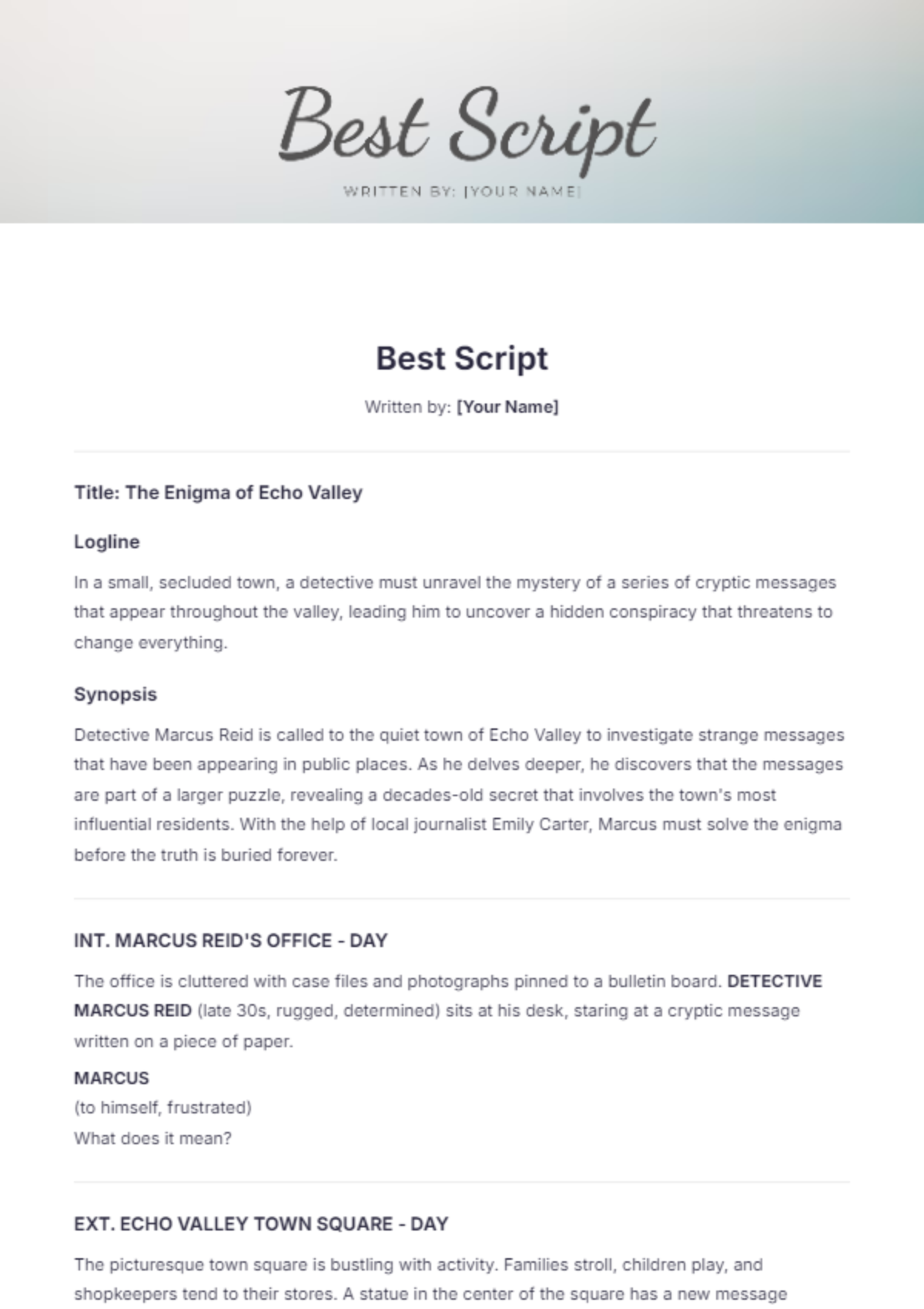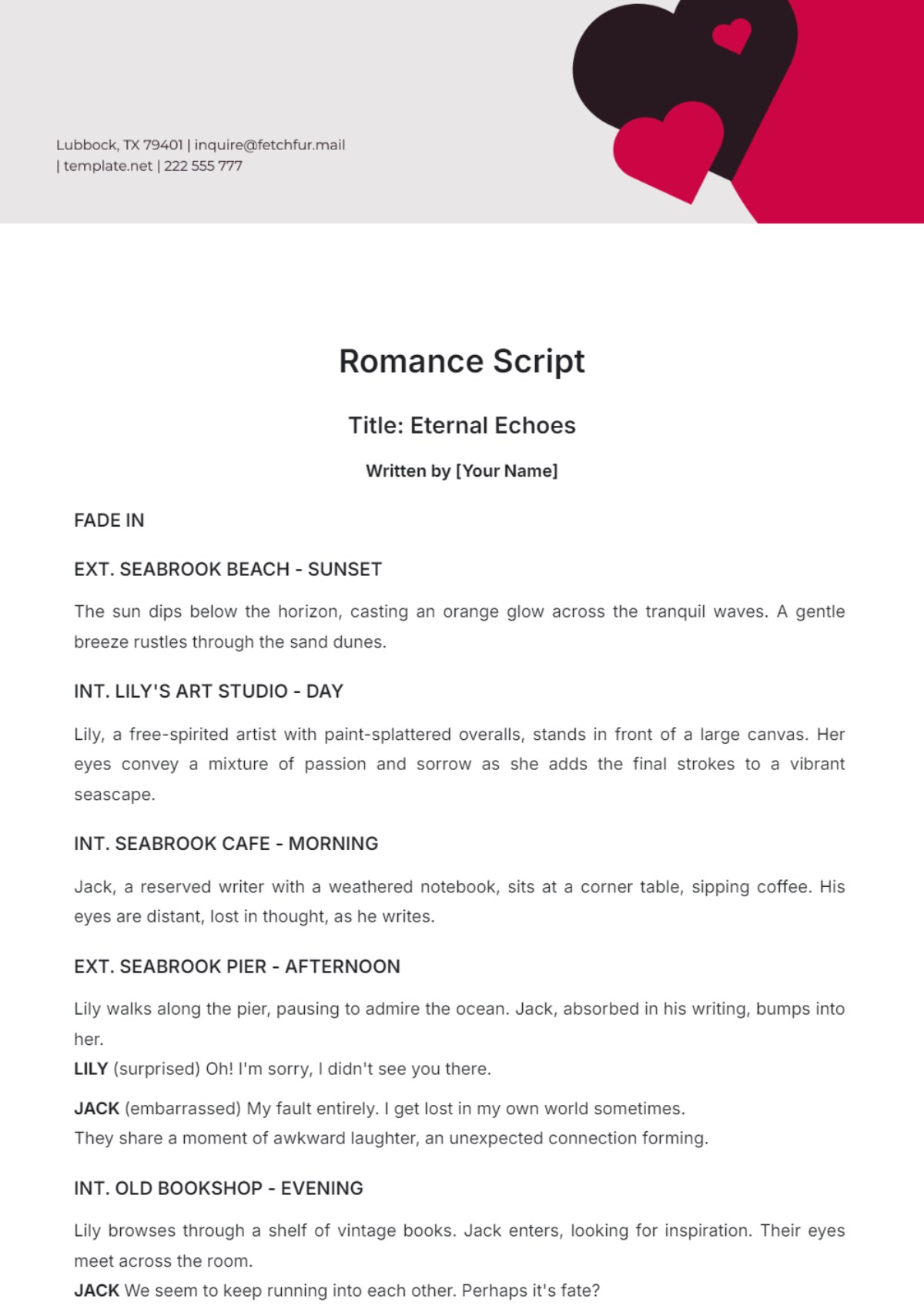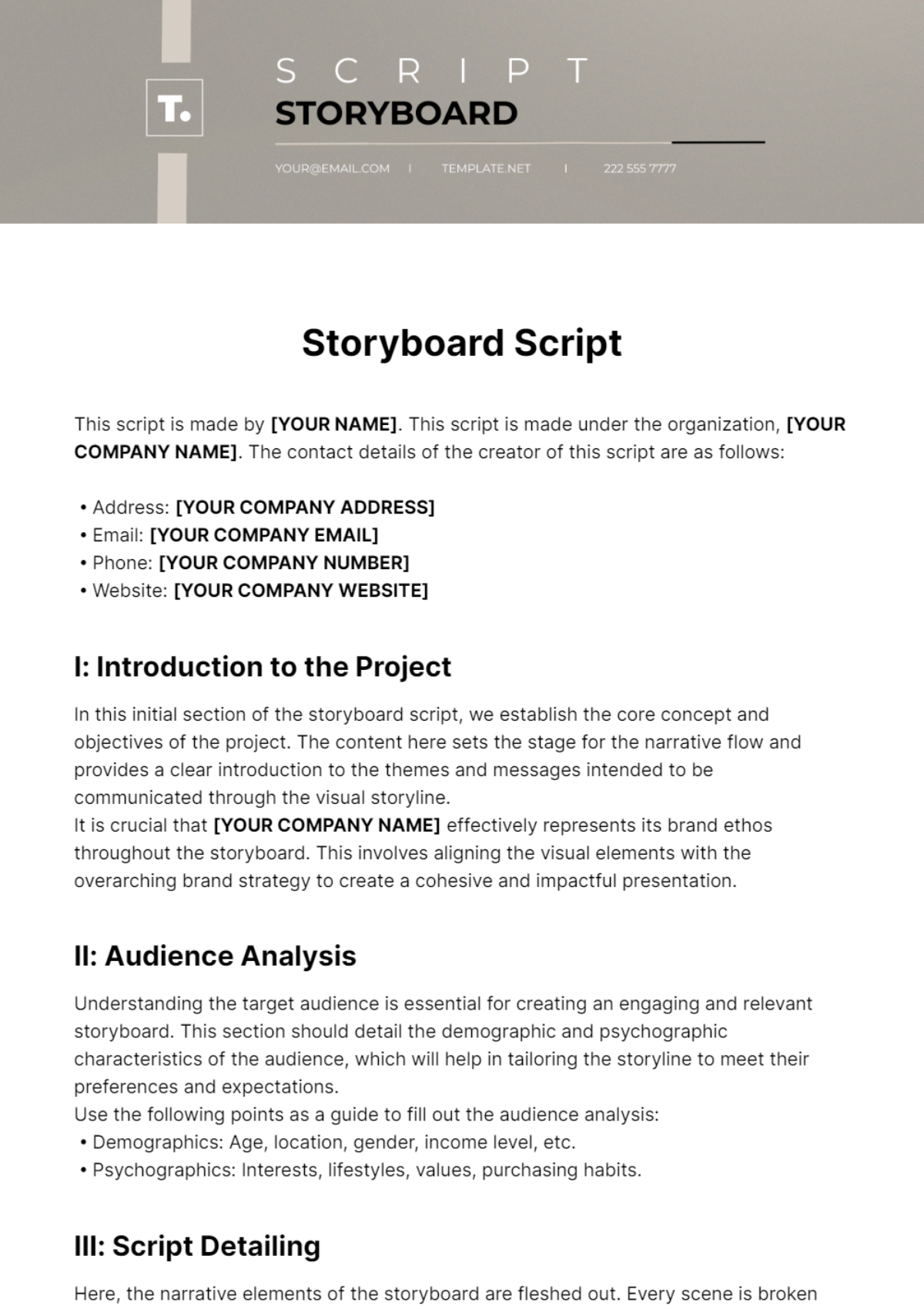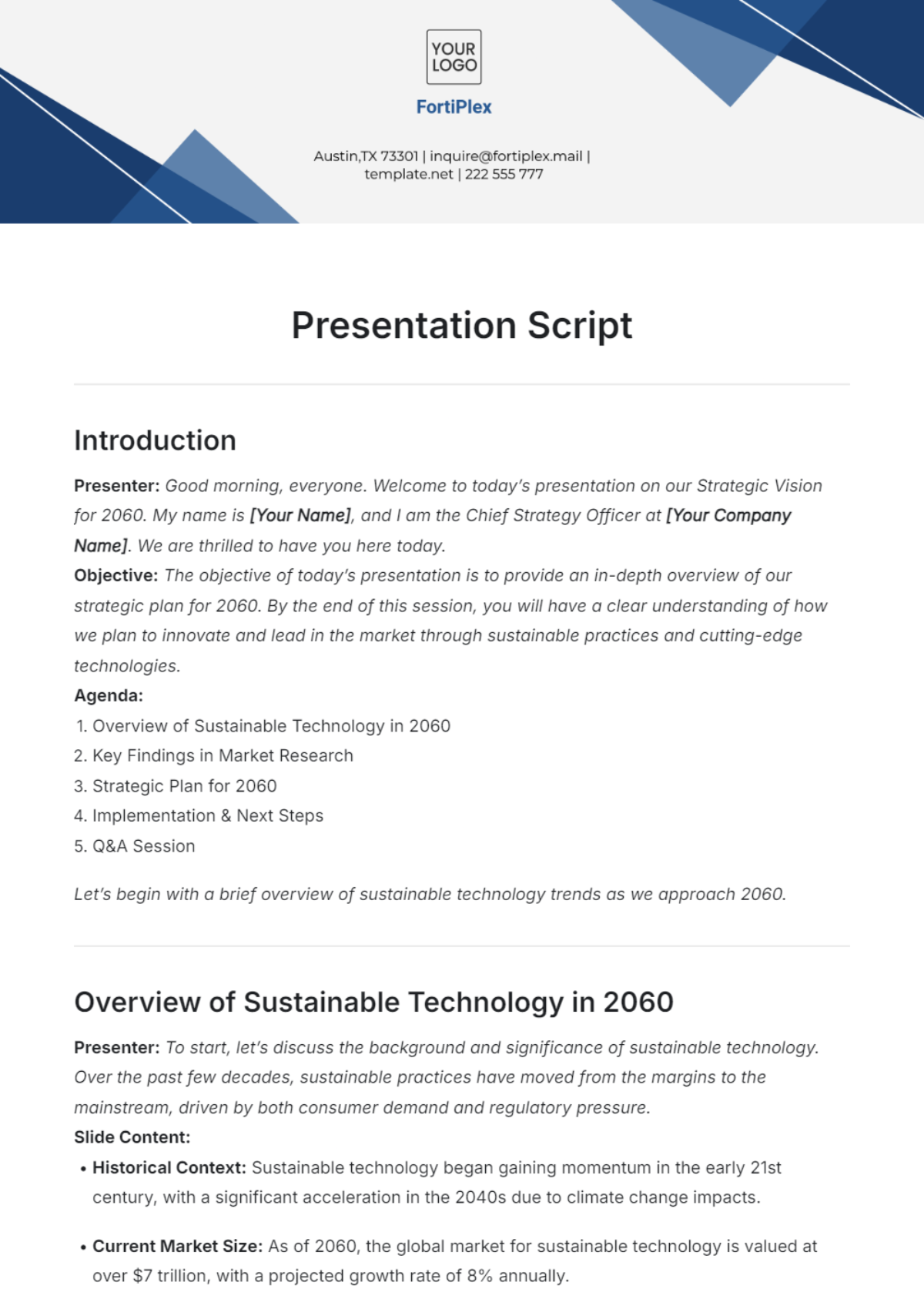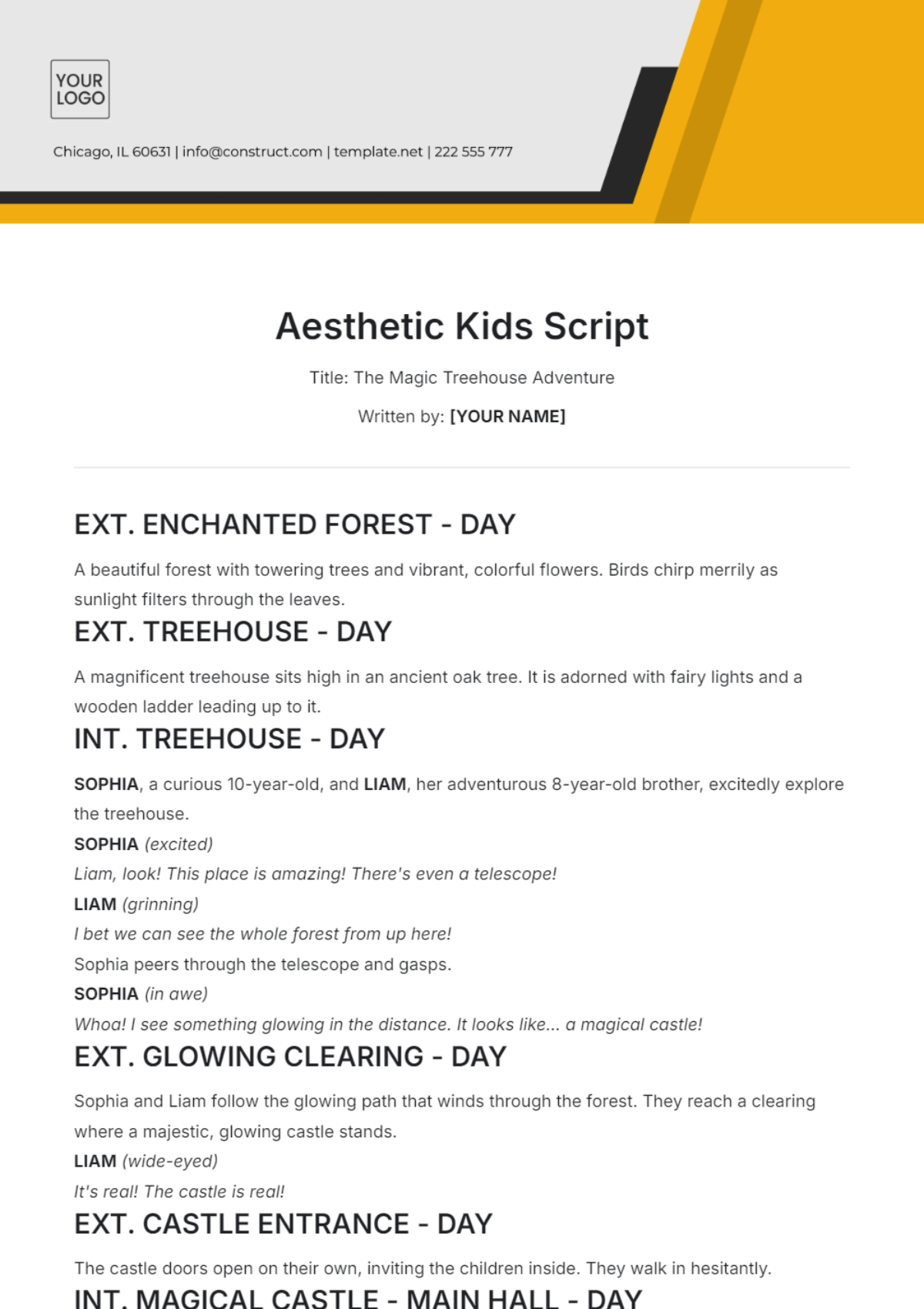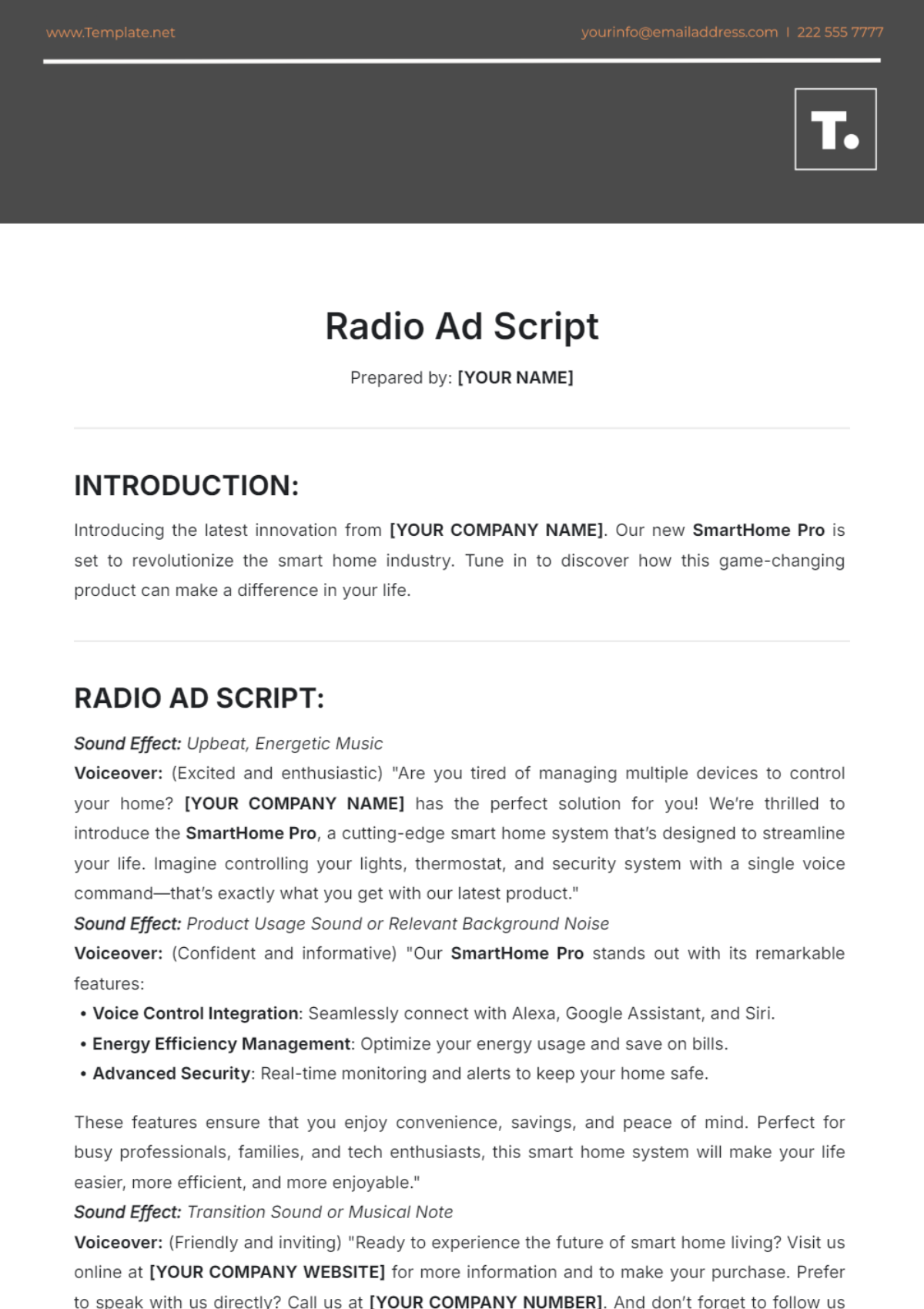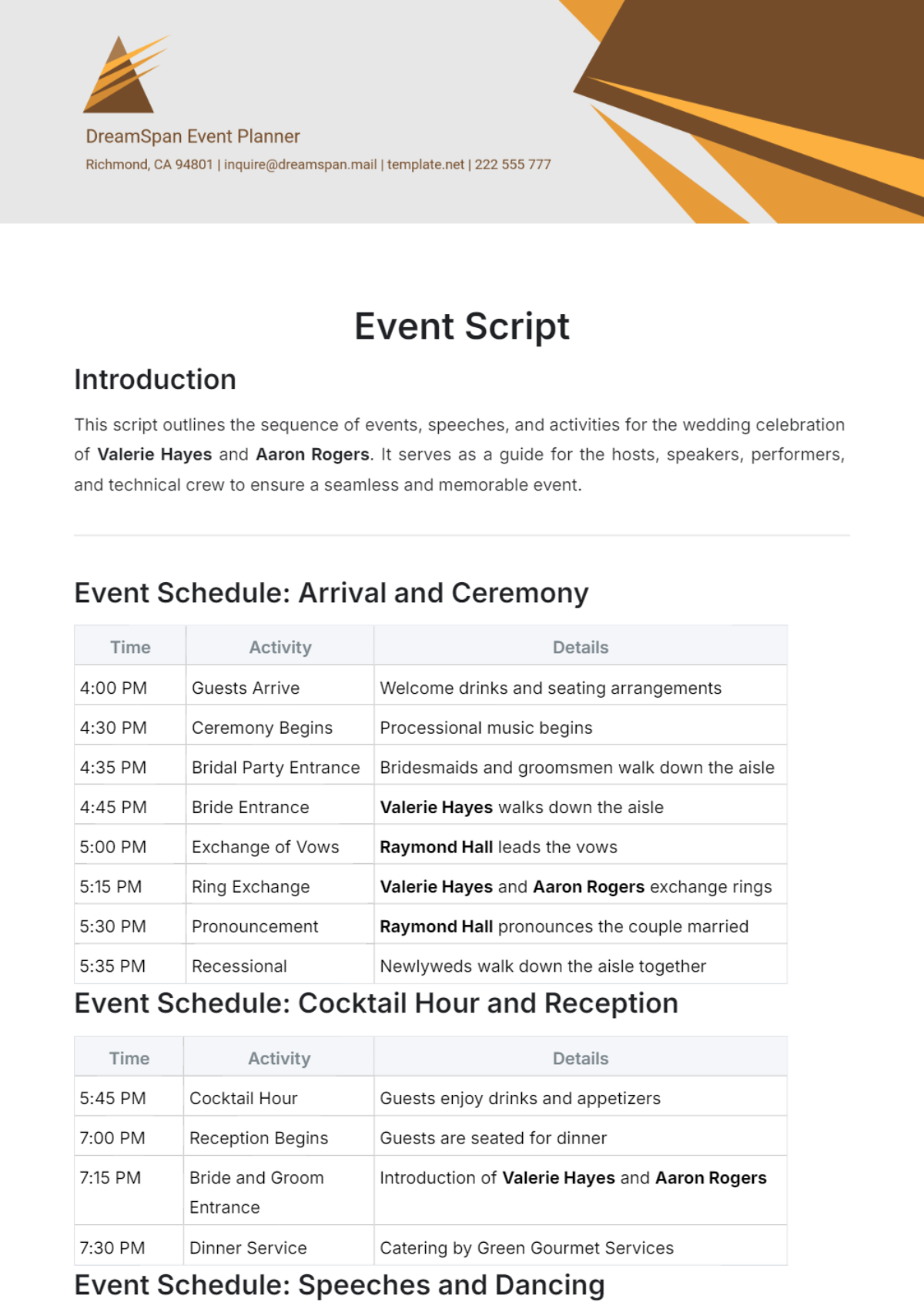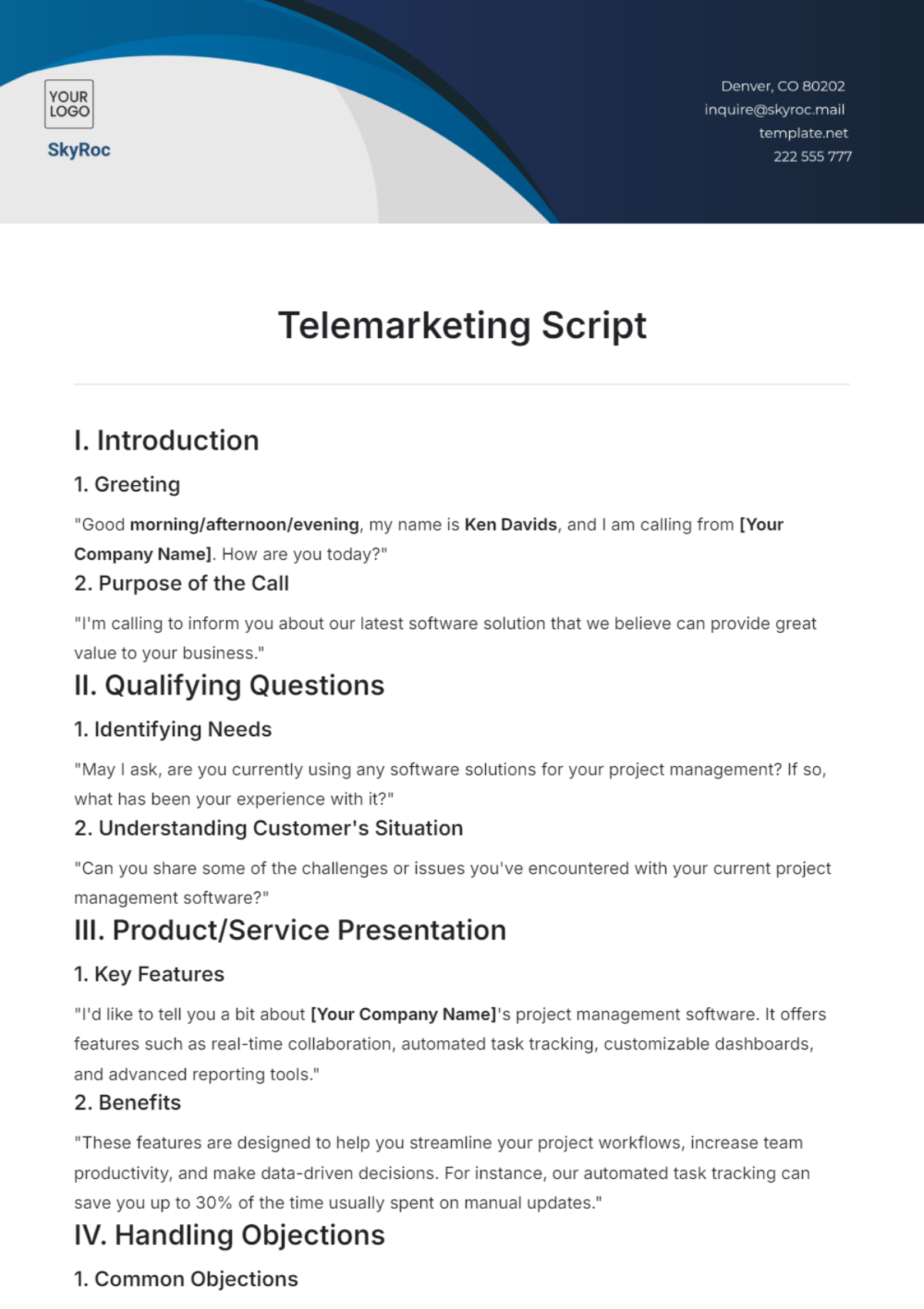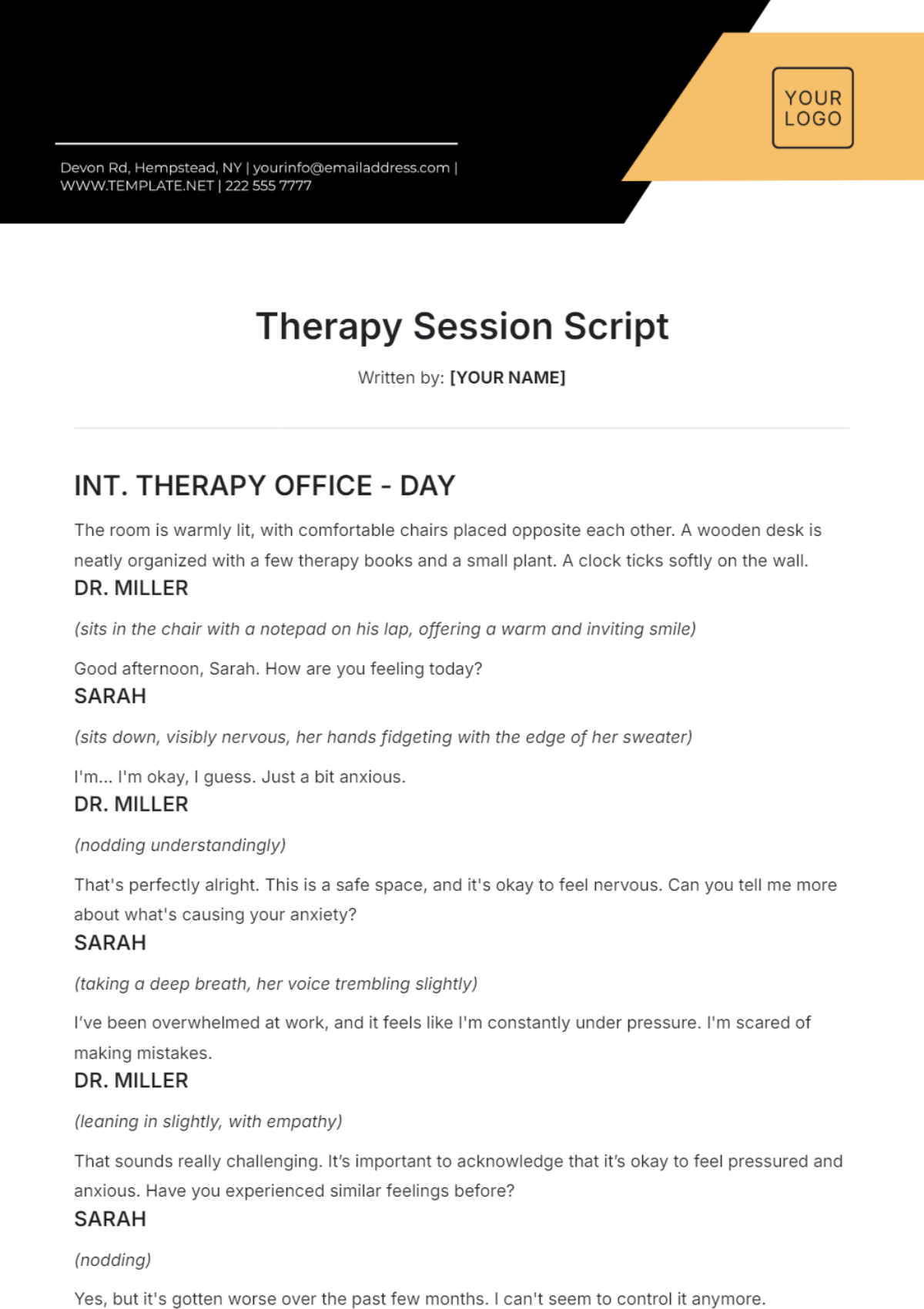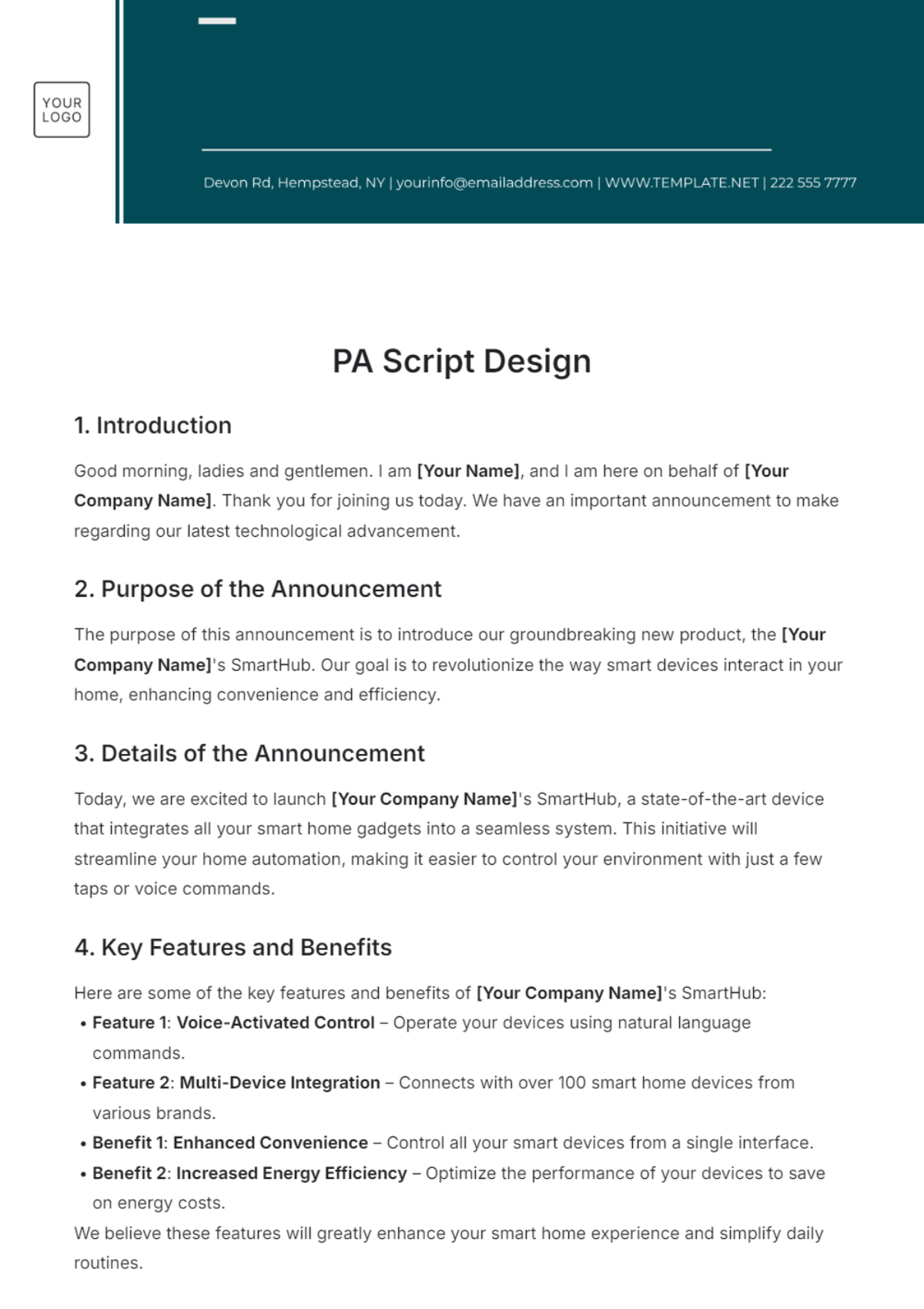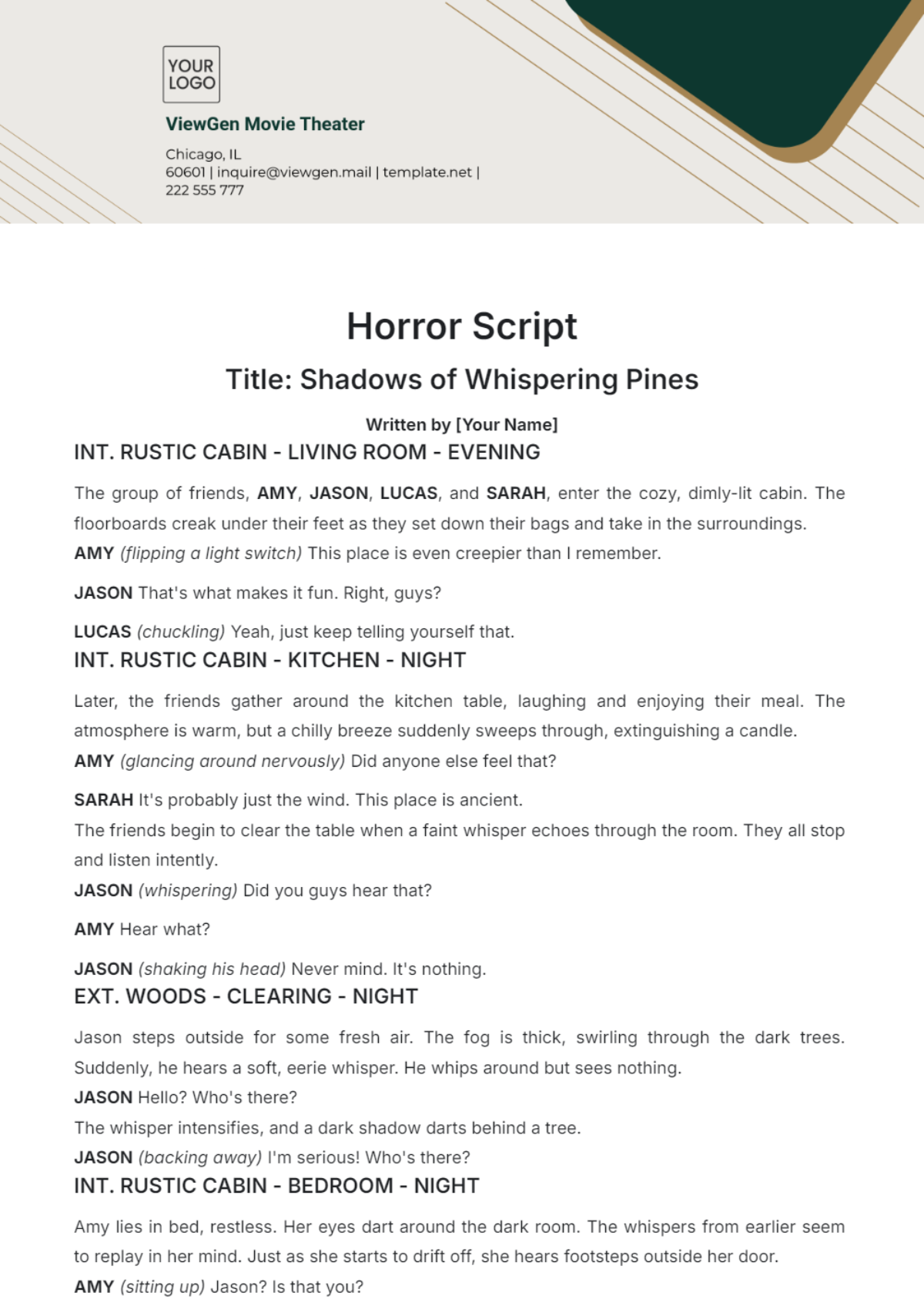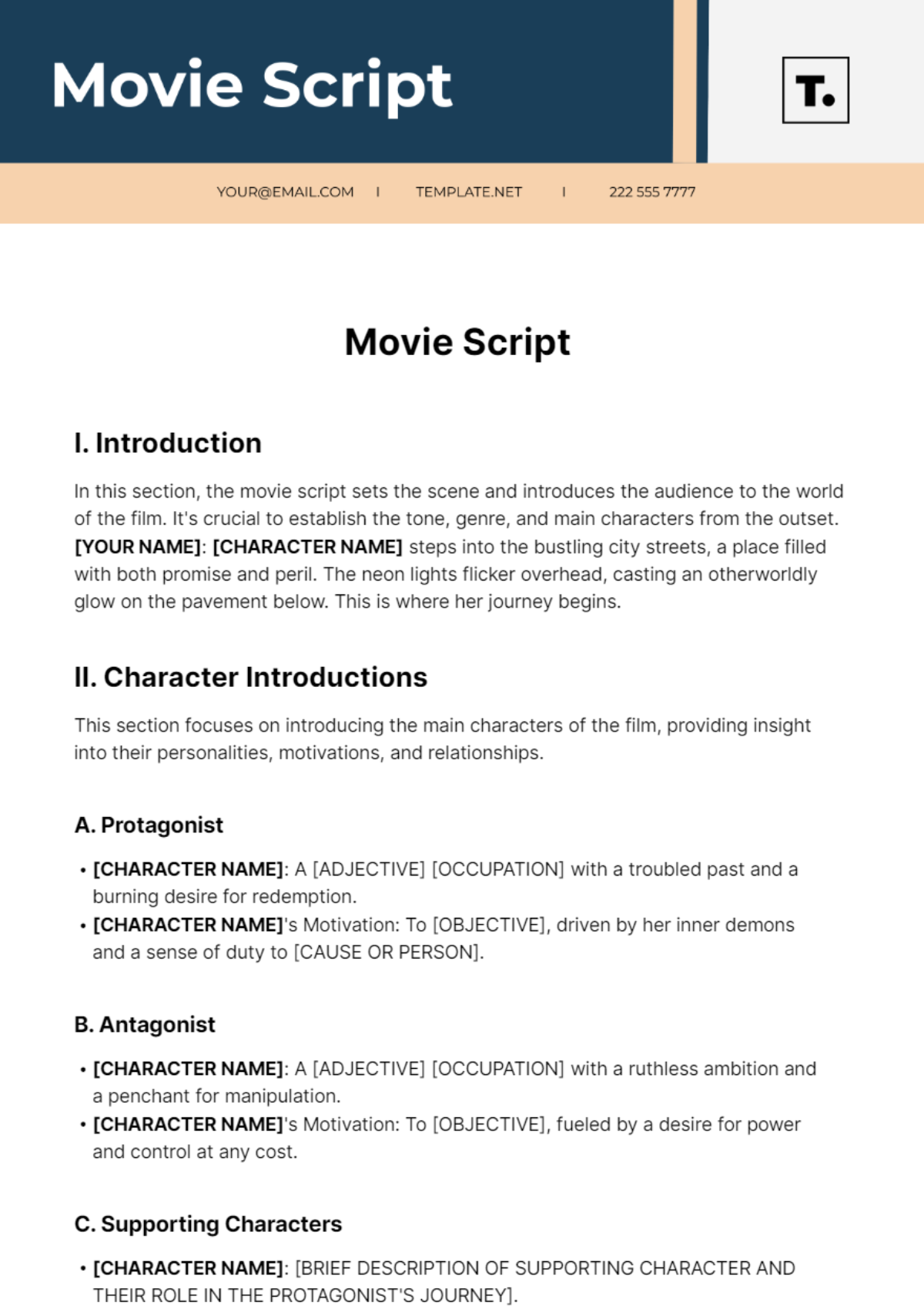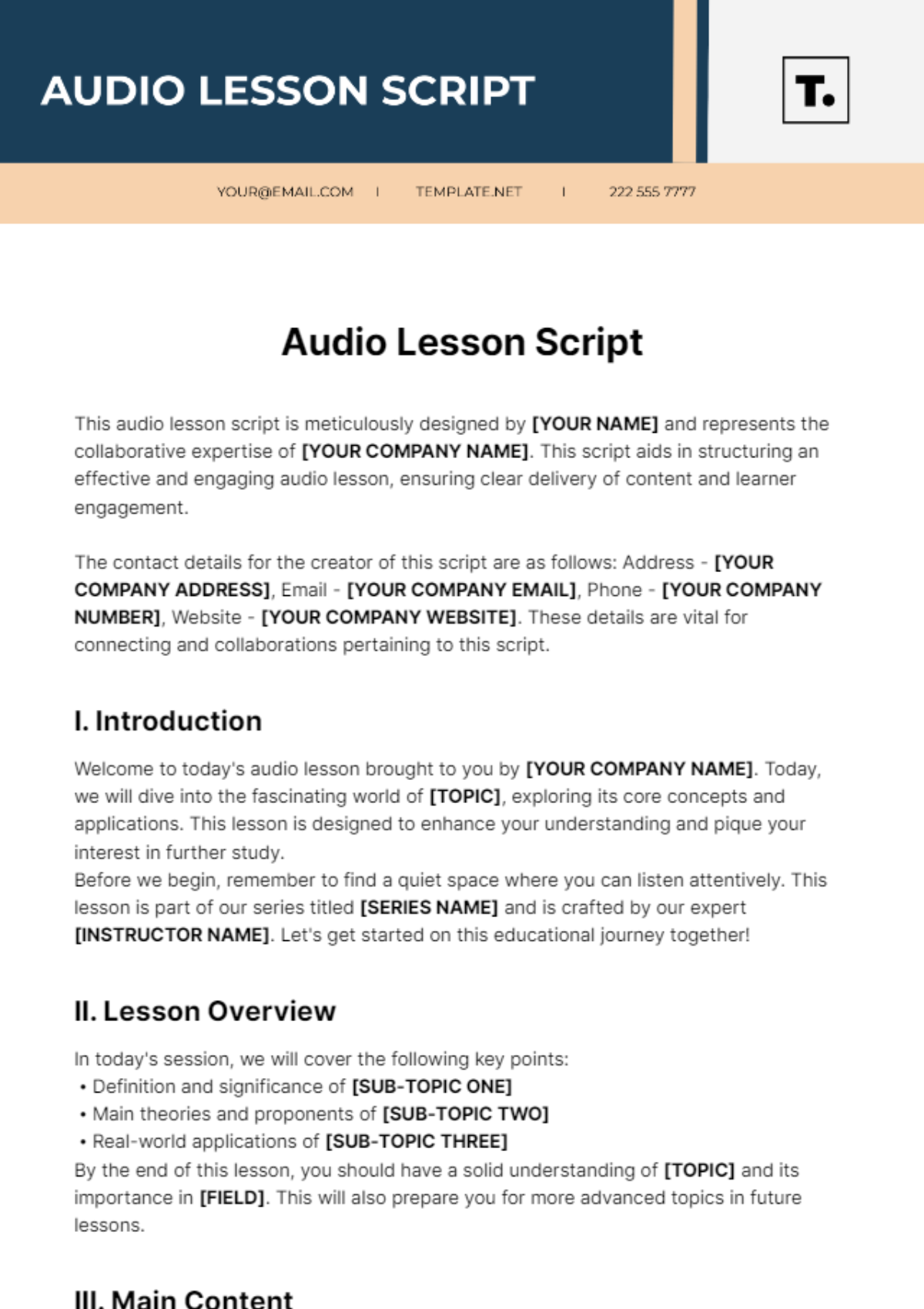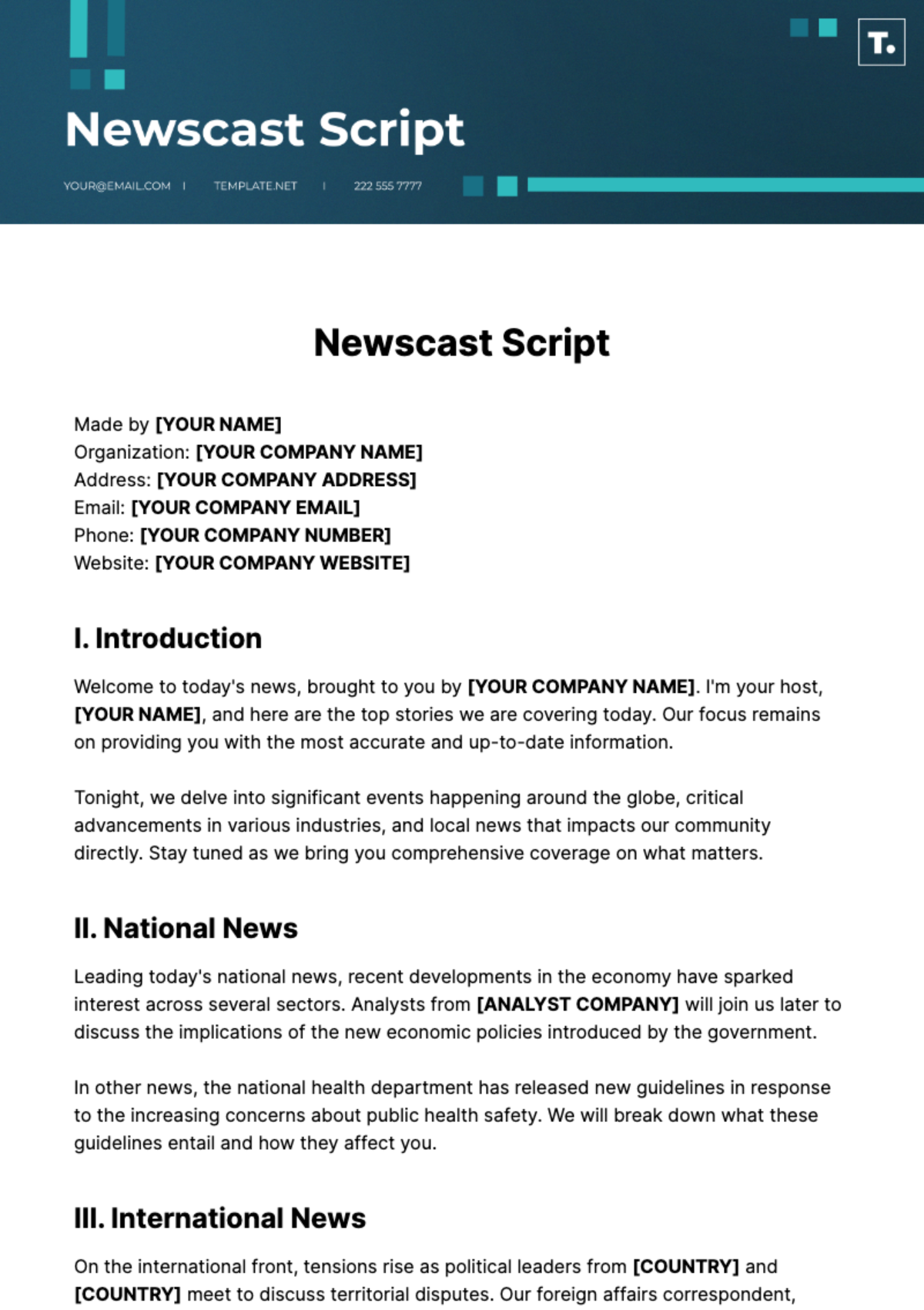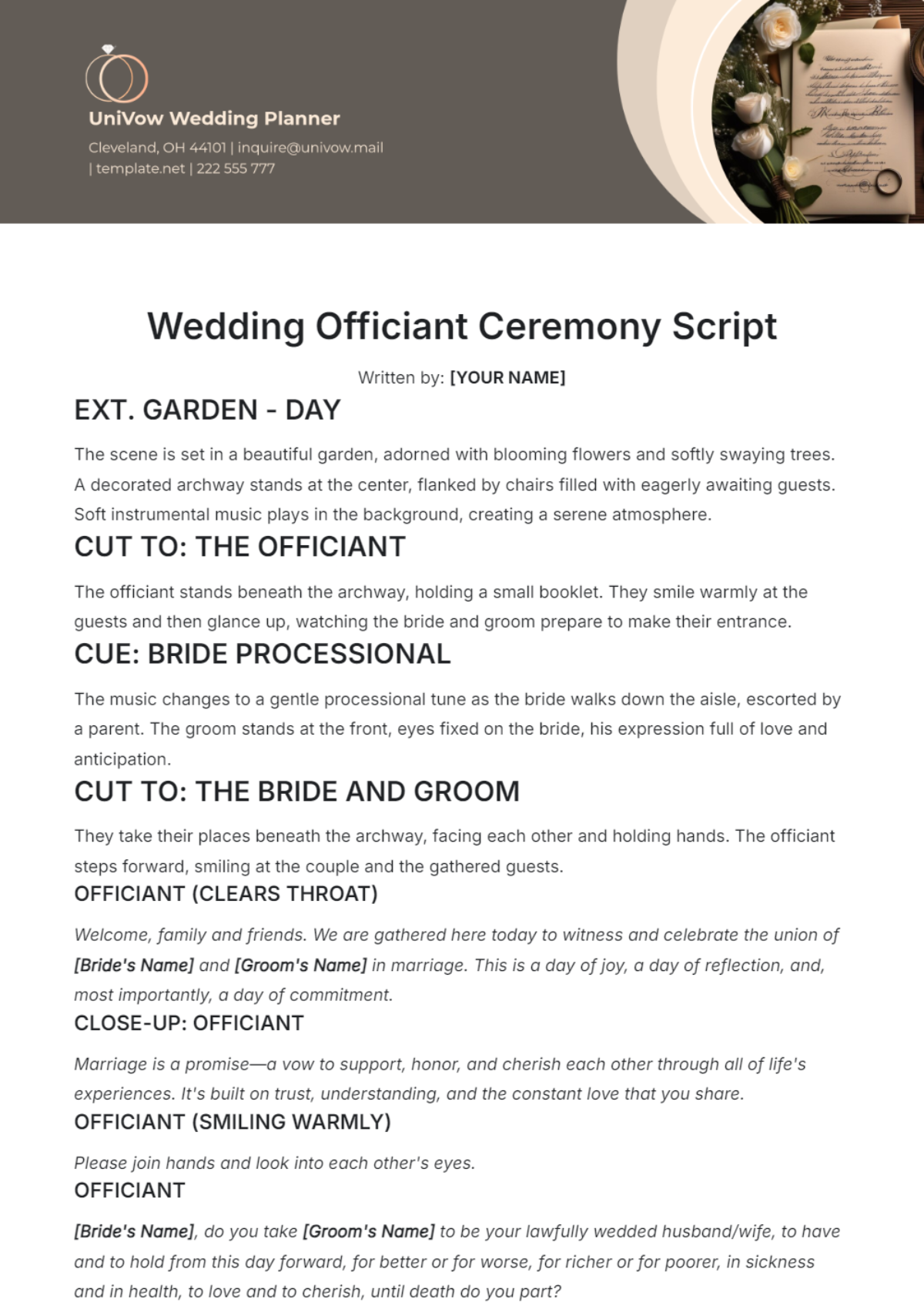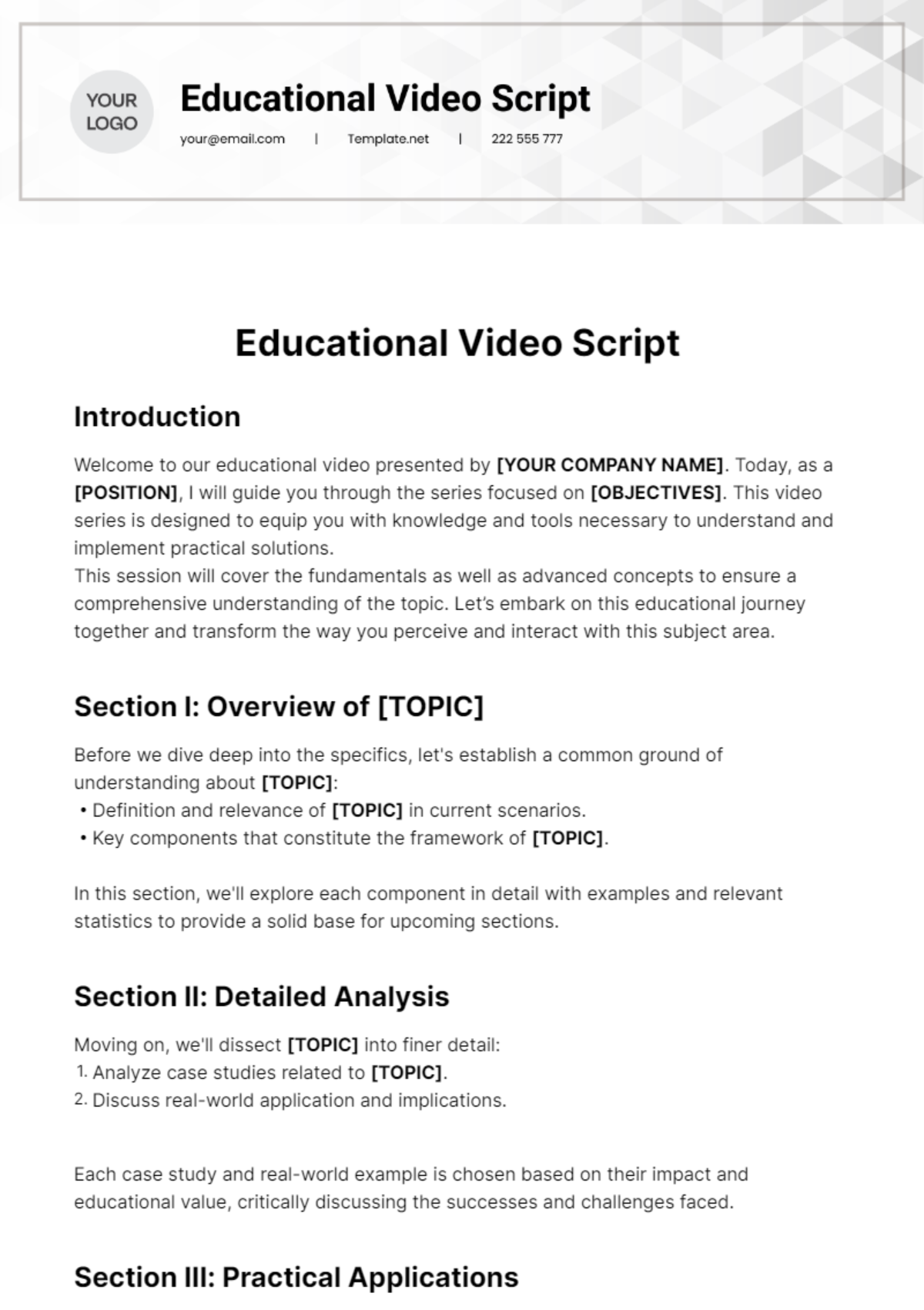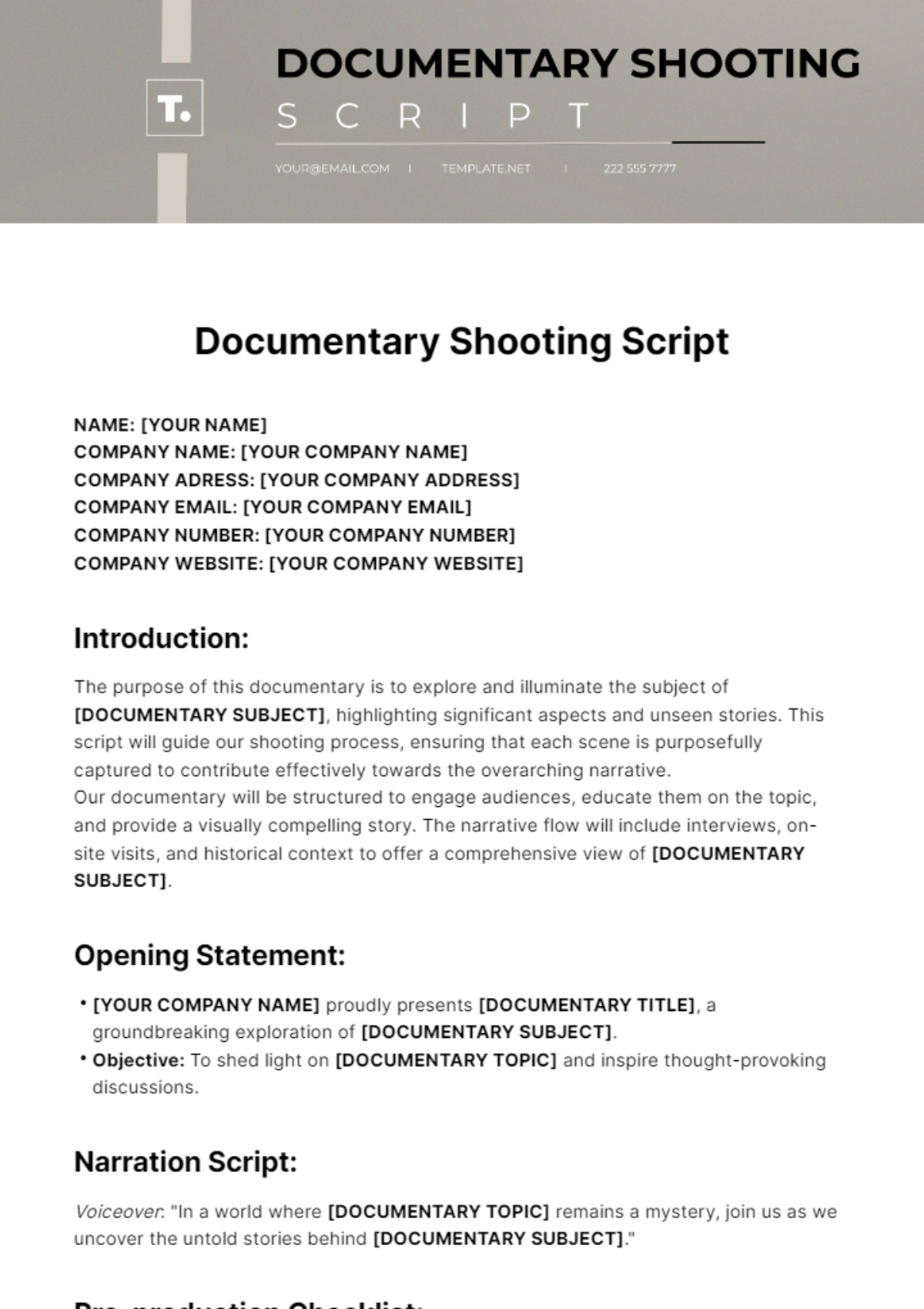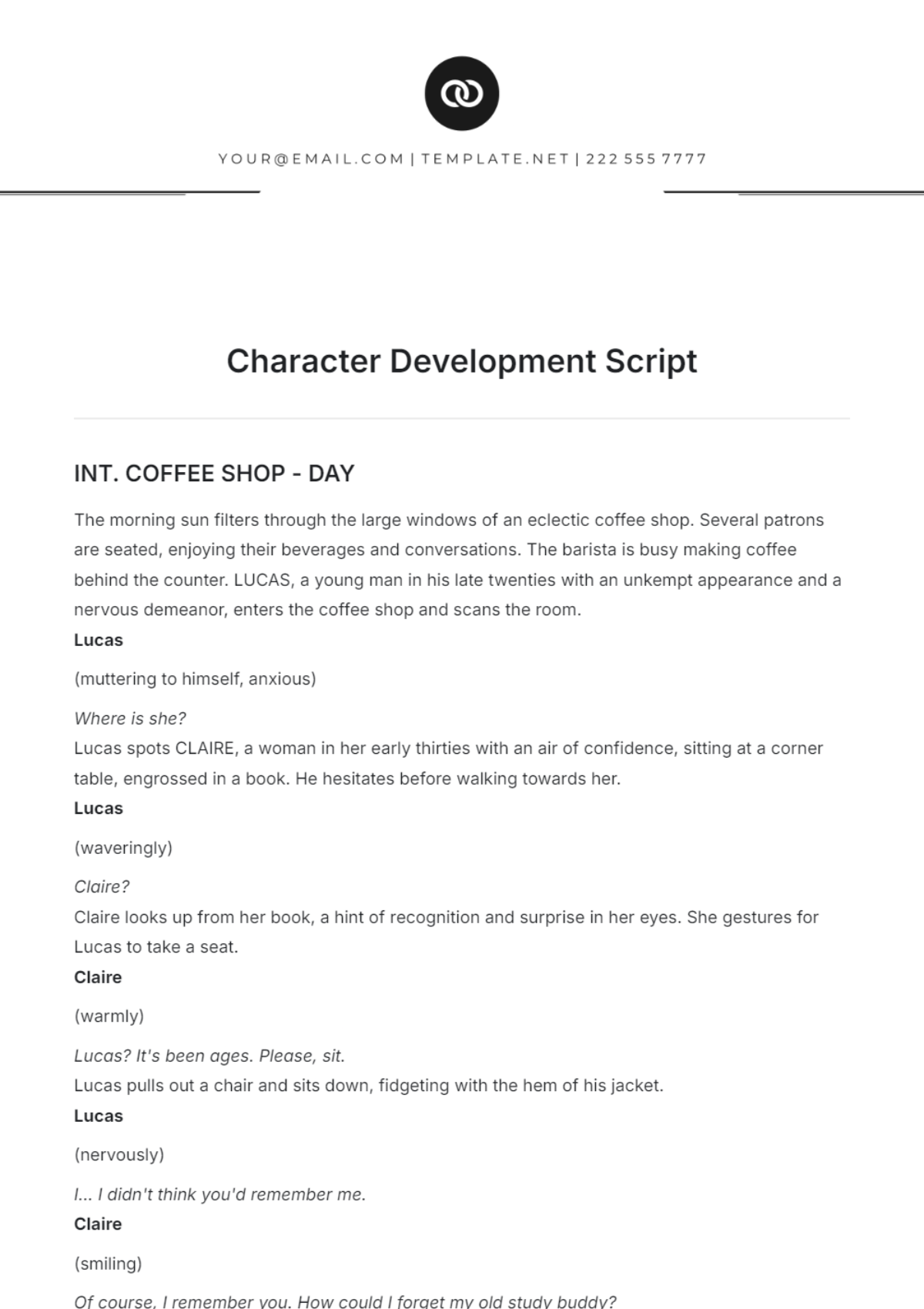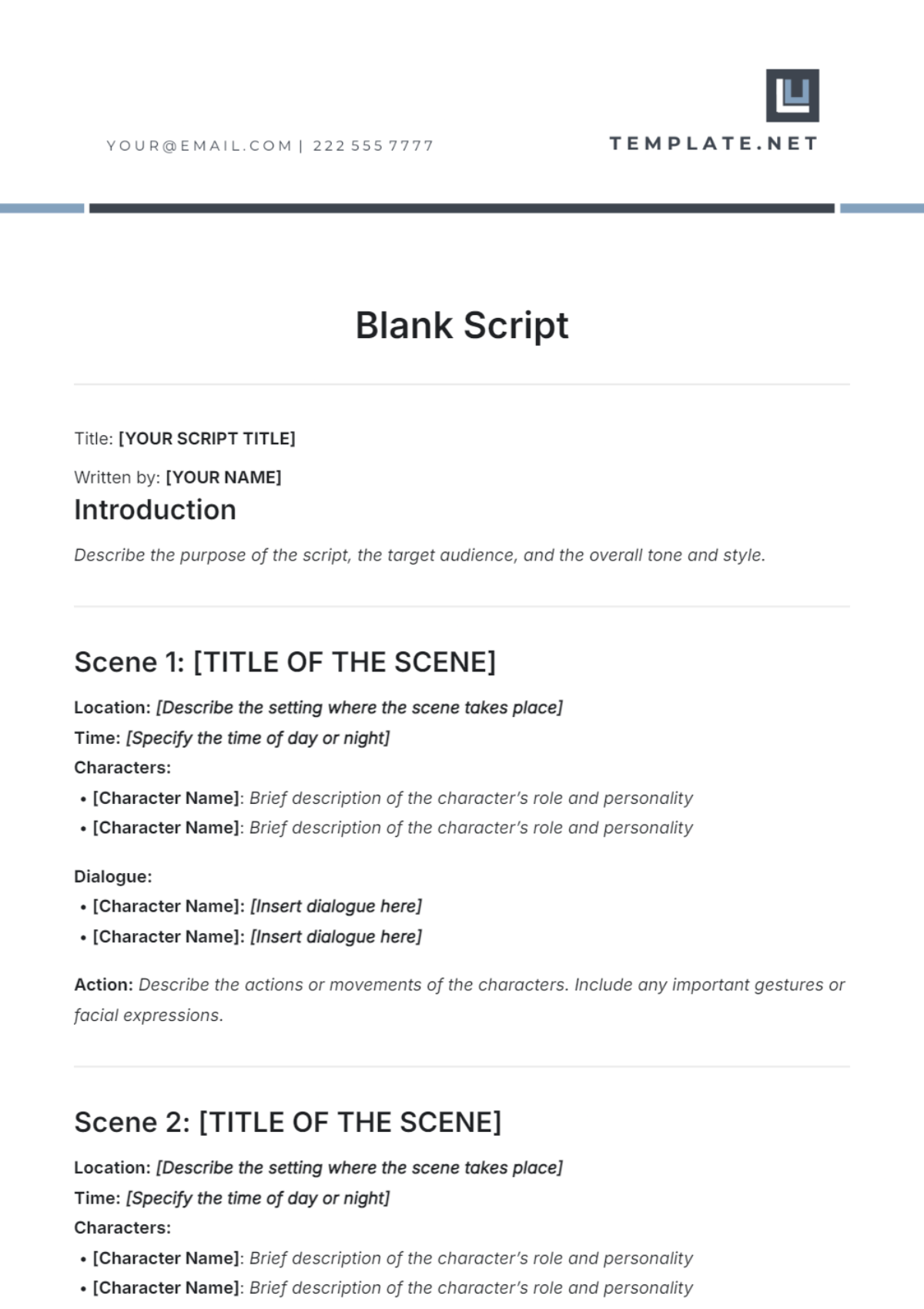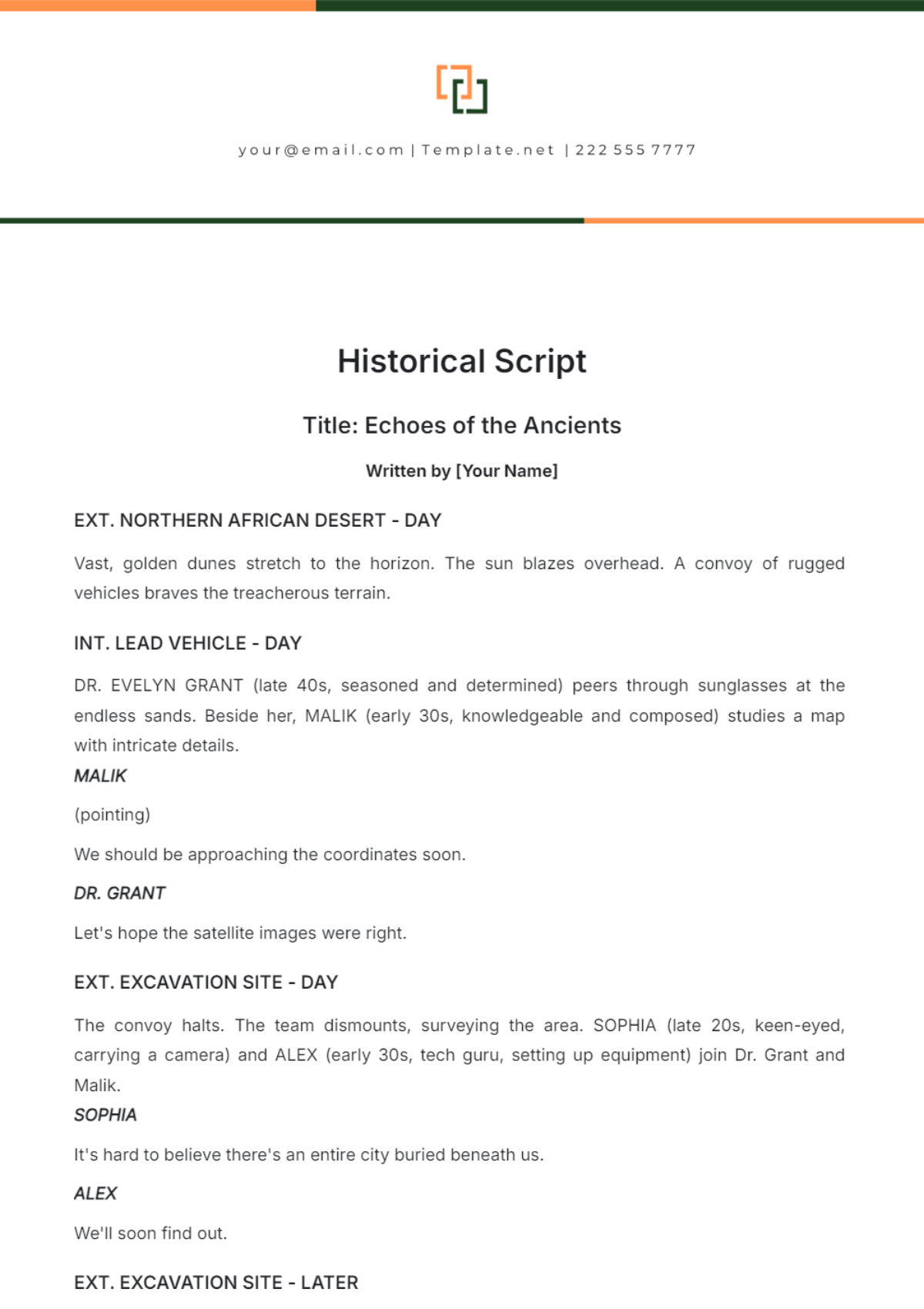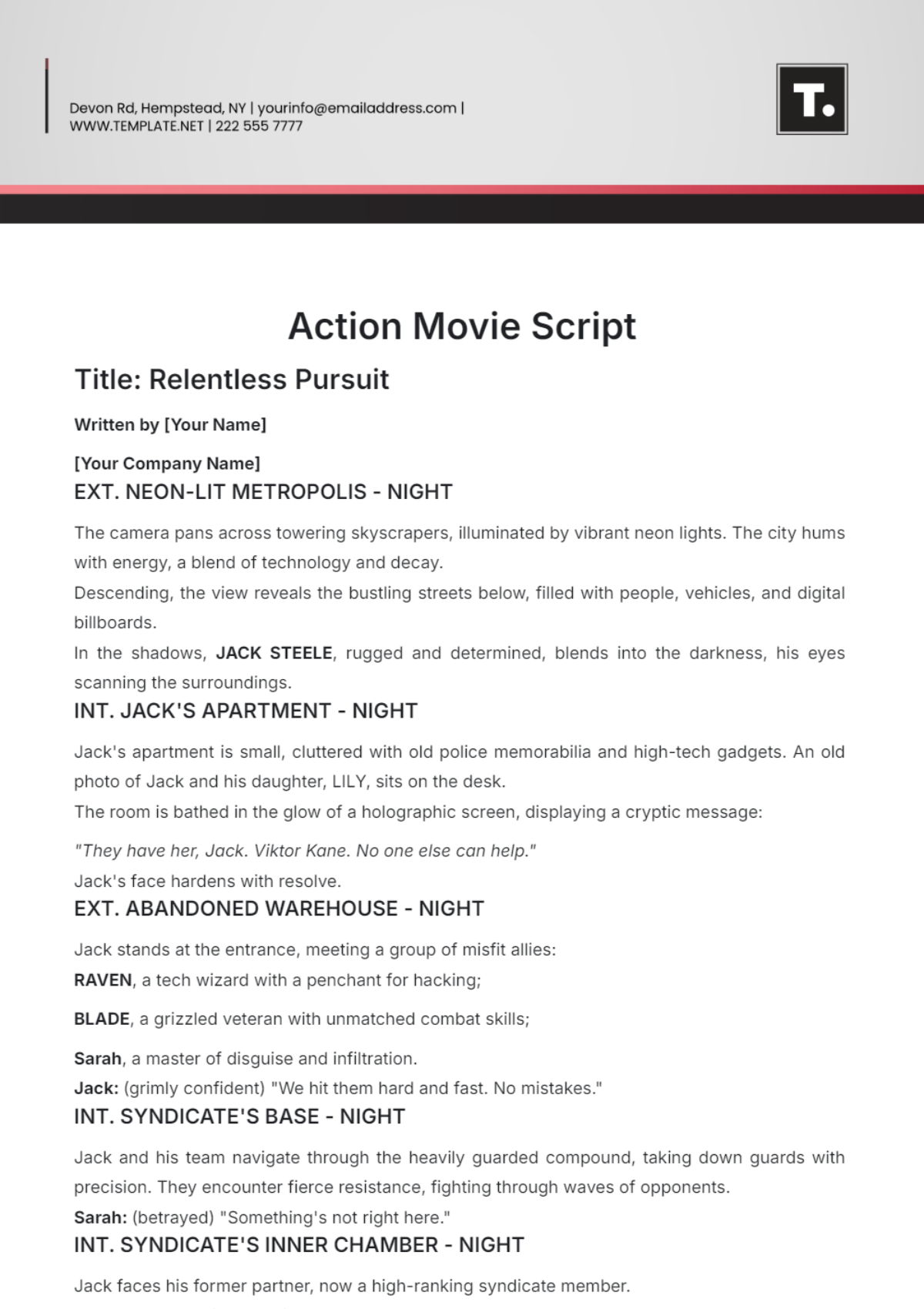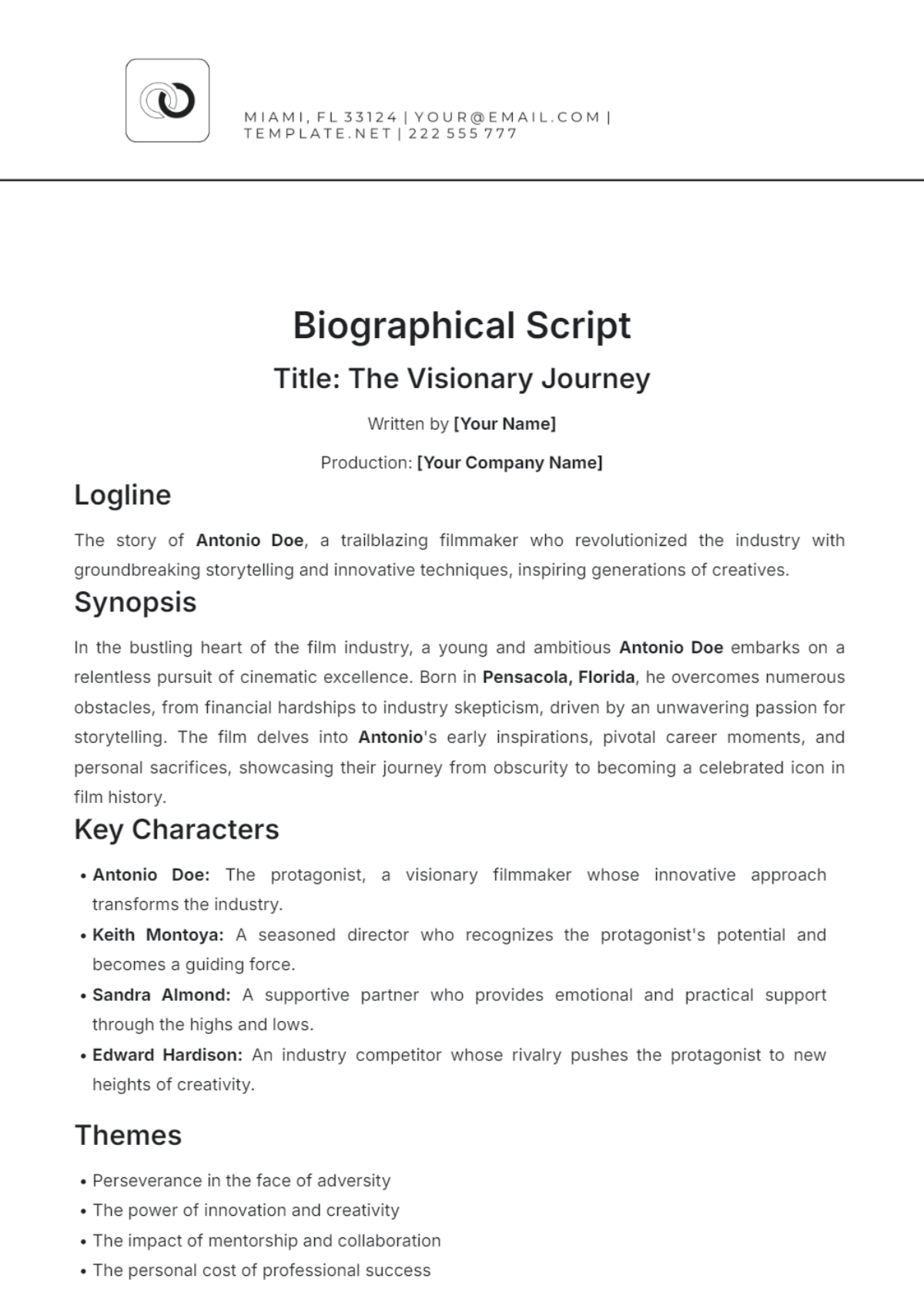Theater Script
This script is meticulously designed by [YOUR NAME] and offered under the auspices of [YOUR COMPANY NAME]. Located at [YOUR COMPANY ADDRESS], we remain a beacon of creativity and innovation in the theatrical world. You can reach us at [YOUR COMPANY EMAIL] or [YOUR COMPANY NUMBER], and learn more about our creations at [YOUR COMPANY WEBSITE].
I. Title and Synopsis
Play Title: [PLAY TITLE]
Written by: [PLAYWRIGHT'S NAME]
Synopsis: Begin this section by briefly summarizing the play. The synopsis should provide a clear overview of the play's plot, highlighting major events and the central conflict while leaving room for developments to unfold naturally during performances. This part should aim to intrigue and inform without giving away crucial twists or the resolution.
II. Characters
Well-developed characters are the heart and soul of any theatrical production, driving the narrative forward and engaging the audience on an emotional level.
A. Protagonist
The protagonist is the central character around whom the story revolves. Describe the protagonist's [NAME], [AGE], [BACKGROUND], and [MOTIVATION], as well as any other defining characteristics that shape their journey throughout the play.
B. Antagonist
The antagonist serves as the primary obstacle or adversary faced by the protagonist. Provide details about the antagonist's [NAME], [GOALS], [CONFLICTS], and [PERSONALITY TRAITS], illustrating the dynamic interplay between protagonist and antagonist that fuels the dramatic tension of the story.
C. Supporting Characters
Supporting characters play vital roles in supporting the main storyline and providing depth to the world of the play. Create brief profiles for each supporting character, including their [NAMES], [RELATIONSHIPS] to the protagonist, and [DISTINCTIVE TRAITS] that contribute to the overall narrative.
III.Plot Structure
A well-constructed plot is essential for keeping the audience engaged from start to finish, with each scene contributing to the overarching story arc.
A. Exposition
The exposition introduces the audience to the world of the play, establishing the setting, characters, and central conflict. [SET THE SCENE] and [INTRODUCE THE MAIN CHARACTERS] in a way that captivates the audience's attention and sets the stage for the unfolding drama.
B. Rising Action
The rising action builds upon the initial conflict, escalating tension and complexity as the protagonist confronts obstacles and challenges on their journey towards resolution. [CREATE OBSTACLES] that test the protagonist's resolve and [INTRODUCE NEW CHARACTERS] or plot developments that propel the story forward.
C. Climax
The climax is the pivotal moment of the play, where the tension reaches its peak and the central conflict is confronted head-on. [BUILD SUSPENSE] leading up to the climax and [ORCHESTRATE A DRAMATIC CONFRONTATION] between protagonist and antagonist that resolves the primary conflict of the story.
D. Falling Action
The falling action follows the climax and explores the aftermath of the protagonist's triumph or defeat. [RESOLVE SUBPLOTS] and [TIE UP LOOSE ENDS], providing closure for the audience while leaving room for interpretation and reflection.
E. Resolution
The resolution brings the story to a satisfying conclusion, offering insights or lessons learned from the protagonist's journey. [REFLECT ON THE CENTRAL THEME] of the play and [OFFER CLOSURE] for the characters, leaving the audience with a sense of fulfillment and emotional resonance.
IV. Act and Scene Breakdown
The Acts and Scenes form the structural backbone of the play. Outline each act and scene with a focus on the main events and changes in character dynamics. This should serve as a guide for pacing and developing narrative tension.
For example:
Act | Scene | Location | Main Event |
|---|---|---|---|
I | 1 | [INITIAL SETTING] | Introduction of main conflict and characters. |
II | 2 | [SECONDARY SETTING] | Development of the secondary subplot. |
V. Dialogue and Stage Directions
Effective dialogue and stage directions are essential for conveying the emotions, motivations, and actions of the characters, bringing the script to life on stage.
A. Dialogue
Dialogue should be [AUTHENTIC] and [CHARACTER-DRIVEN], revealing the personalities and relationships of the characters while advancing the plot. [USE SUBTEXT] and [SENSORY DETAILS] to add depth and realism to the dialogue, creating moments of tension, humor, and poignancy that resonate with the audience.
B. Stage Directions
Stage directions provide essential guidance for actors, directors, and production teams, detailing the physical movements, expressions, and blocking of the characters on stage. [BE CONCISE] and [SPECIFIC] in your stage directions, ensuring clarity and consistency in the interpretation of the script.
VI. Production Notes
This section should include any additional notes necessary for understanding the vision of the play. It may cover themes, motifs, intended audience reactions, and technical requirements such as lighting and sound cues.
Examples of production notes:
Theme exploration through recurring symbolic motifs.
Desired emotional impact on the audience in key scenes.
Technical requirements for a particularly complex scene.
VII. Closing
As you finalize your theater script, remember to stay true to your creative vision while remaining open to [FEEDBACK] and [COLLABORATION]. [TRUST YOUR INSTINCTS] as a storyteller and embrace the iterative process of scriptwriting as an opportunity for [GROWTH] and [REFINEMENT]. With [DEDICATION], [PERSEVERANCE], and the guidance of this template, you're well-equipped to bring your theatrical masterpiece to life on stage. [HAPPY WRITING].
